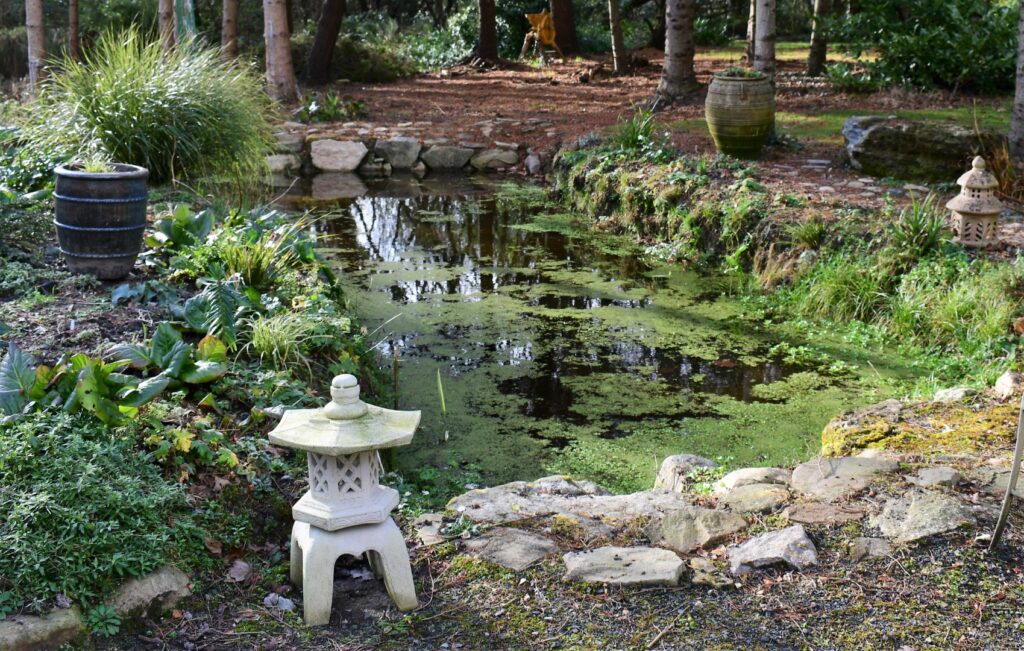Over the past few years since we started the design and construction of the garden in 2006 we have collected items which might add a touch of mystery , a focal point in some areas , pots , old tin baths , vintage agricultural machinery , anything with a bit of history such as old bicycles or milk churns and there is even a cannon ball from Cromwell’s time . Recently I started to gather the photos of these items and thought they deserved a page of their own on the Petrovska Garden website and here in no particular order is a brief description of both the items and where they were sourced .
This is an old terracota chimney pot possibly from Turkey that I bought in the Kilkenny Architectural Salavage Yard in 2011 and it sits in the Rock Garden .
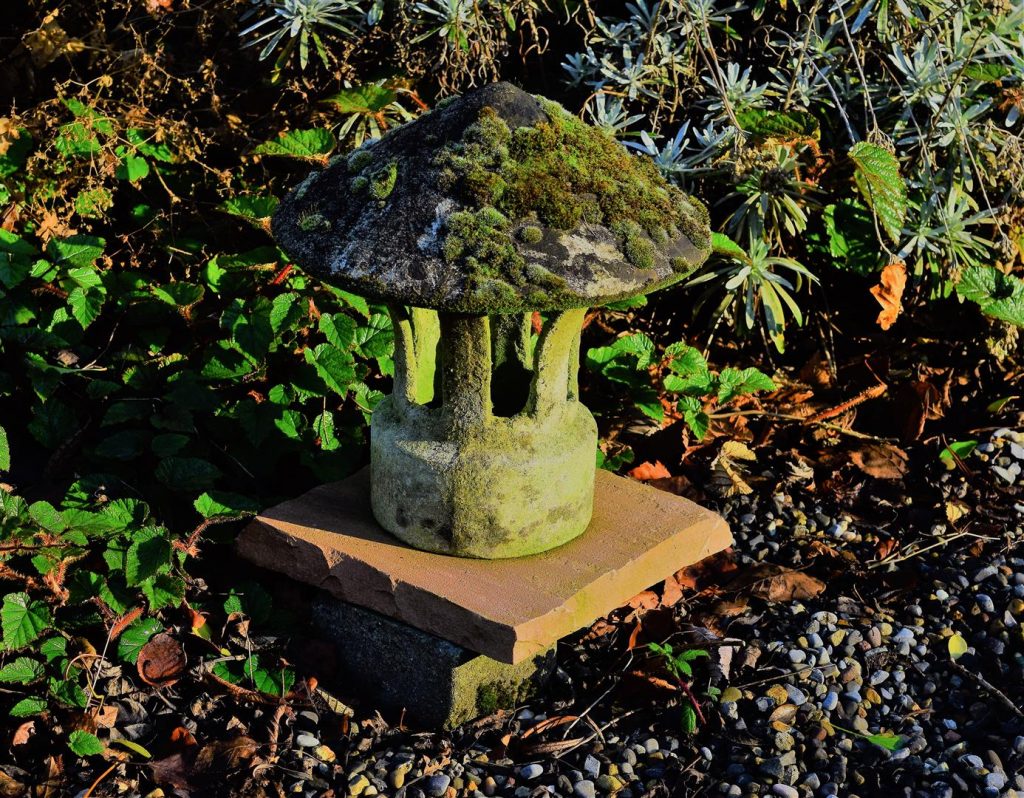
A wooden wheel which was salvaged by a friend of mine from the River Suir on the island in Clonmel and we think it was part of a system that regulated the weir by a series of belts , it now sits in the Rock Garden .
I added a piece of railway sleeper and some bricks to give it height .
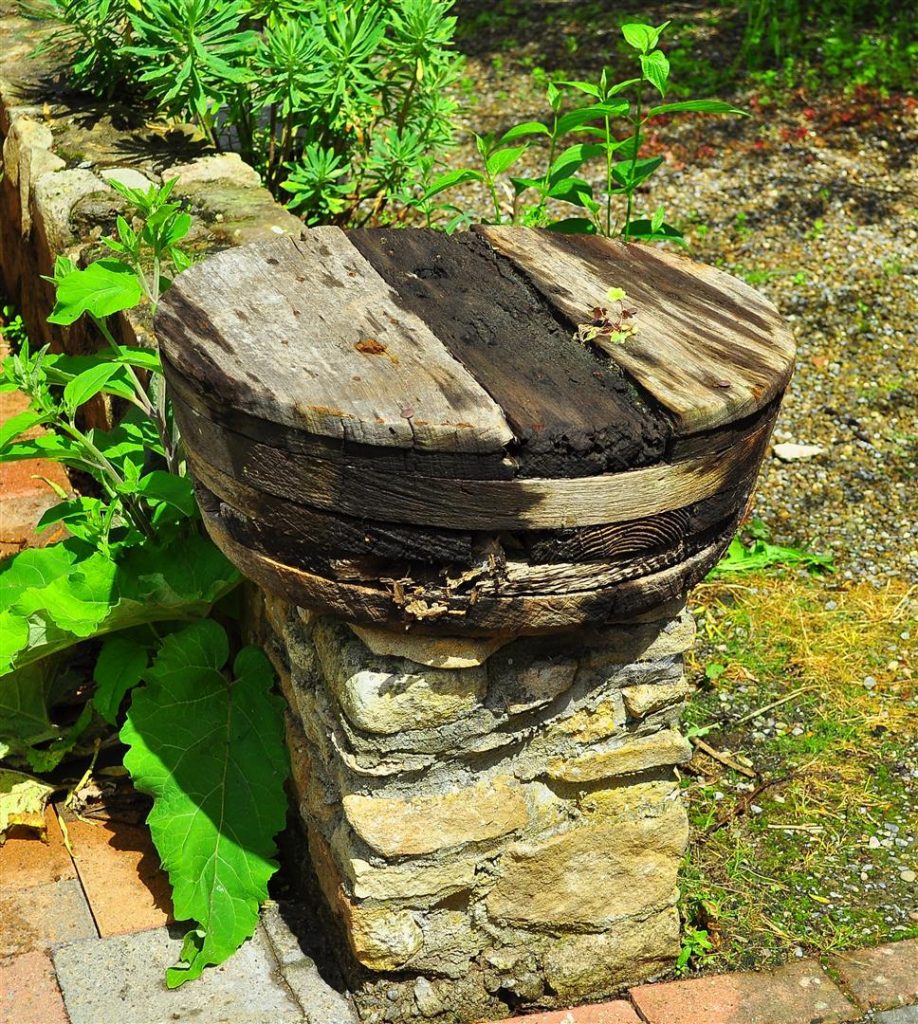
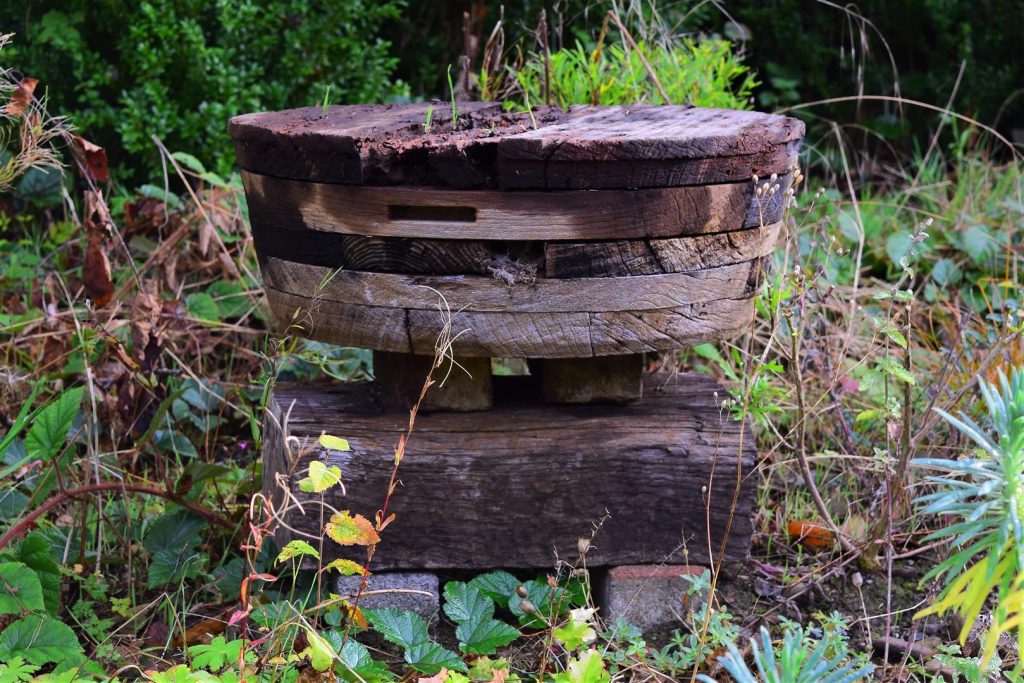
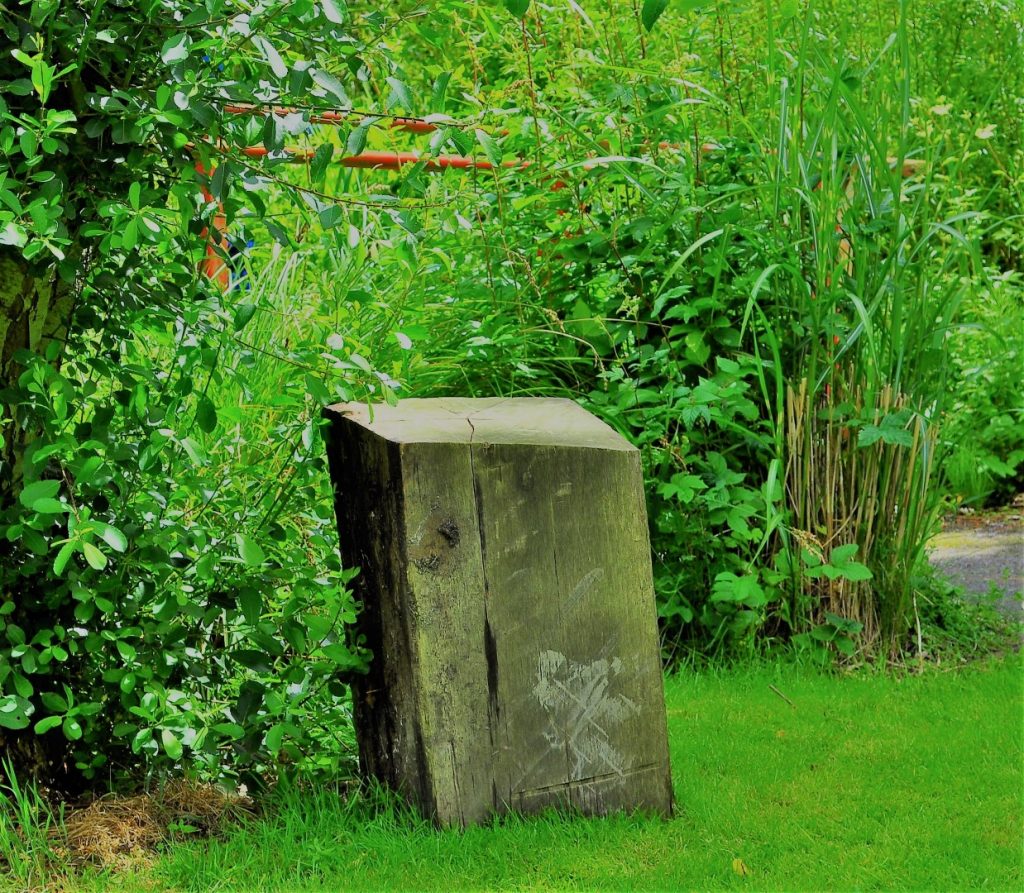
A solid pitch pine block of wood that came from Dublin Port where it was part of the old dock wharves and it has probably been under water for the best part of three hundred years . Peter Cullen bought a parcel of off cuts at a sale in Dublin docklands and donated this piece for the garden in 2013 and it now sits in the Secret Garden .
This Sun King ceramic we bought in Sicily in 2018 , the island has a rich ceramic tradition going back to Arab times in the 12th century . It found a home near the back door .
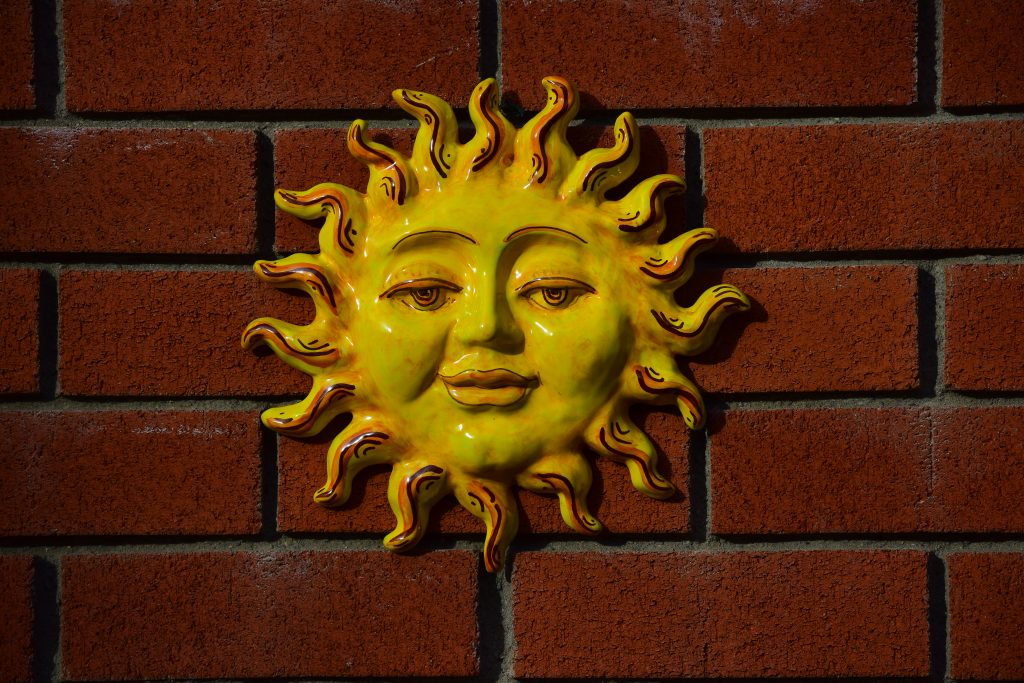
I bought this in a Wexford antique shop and the tin bath is at least seventy years old . Generations of Irish children got their regular bath in one of these things in front of an open fire before the arrival of piped water thoughout the country in the 1950’s . It is now sat in the Gravel Garden where it is good for another fifty years !
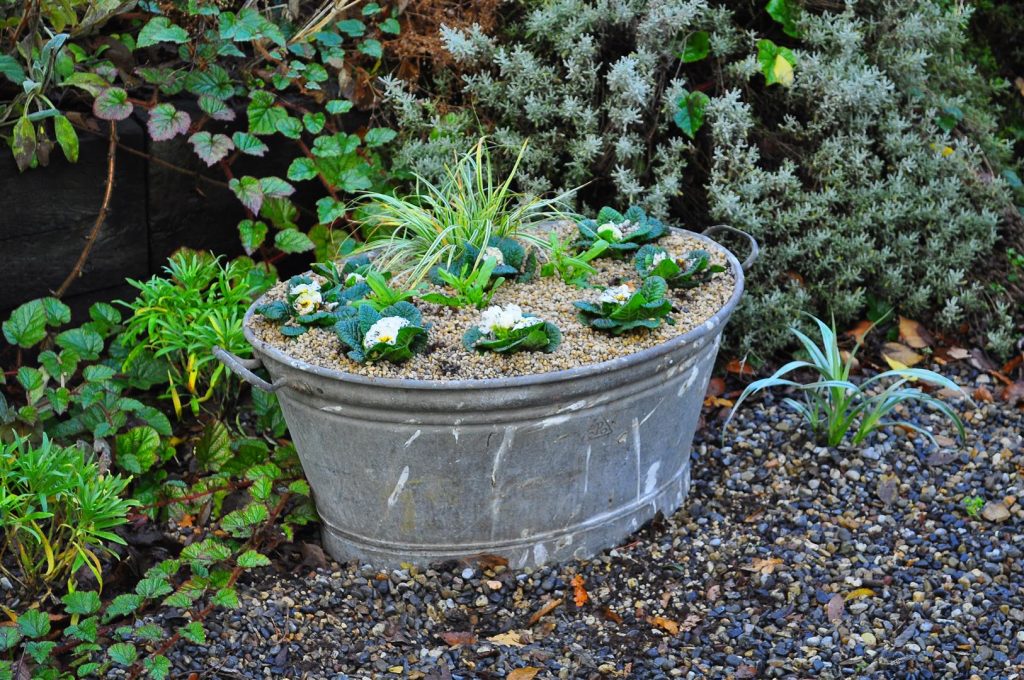
I worked in Bosnia for twelve years immediately after the Bosnian War of the early 1990’s and these are souvenirs of some registration plates before the International Community forced the three nationalist parties to move to a centralised vehicle registration system in 1996 which they hated as it gave anonymity instead of identifying the driver as Serb , Croat or Muslim which the extremists used as a way to keep the ethnicities apart and stop them from mingling as in normal societies . Under the old system just after the war in 1996 it was extremely dangerous for a Croat for example to drive into a Serb area and I remember transporting a Serb family to Foca whose car had broken down in a Muslim area and a few months later I did the same for a mini bus of Muslim students going to Gorazde . Personally I believe changing the three separate vehicle registration systems was one of the best things the IC introduced in post war Bosnia as it led to freedom of movement for all groups .

Snezana found this in Clonmel Garden Centre in 2018 it is a stone replica North American Indian totem pole which was stuck away in a corner and we had passed it several times over a few years without noticing it then this day we stopped by it and it felt suddenly right for the garden ! When it was being collected for delivery several of the garden staff said they would miss it and we now have it in the Front Garden .


This old horse drawn plough probably in use until the 1930’s was donated to the garden by Pascal Mansfeld in April 2019 .
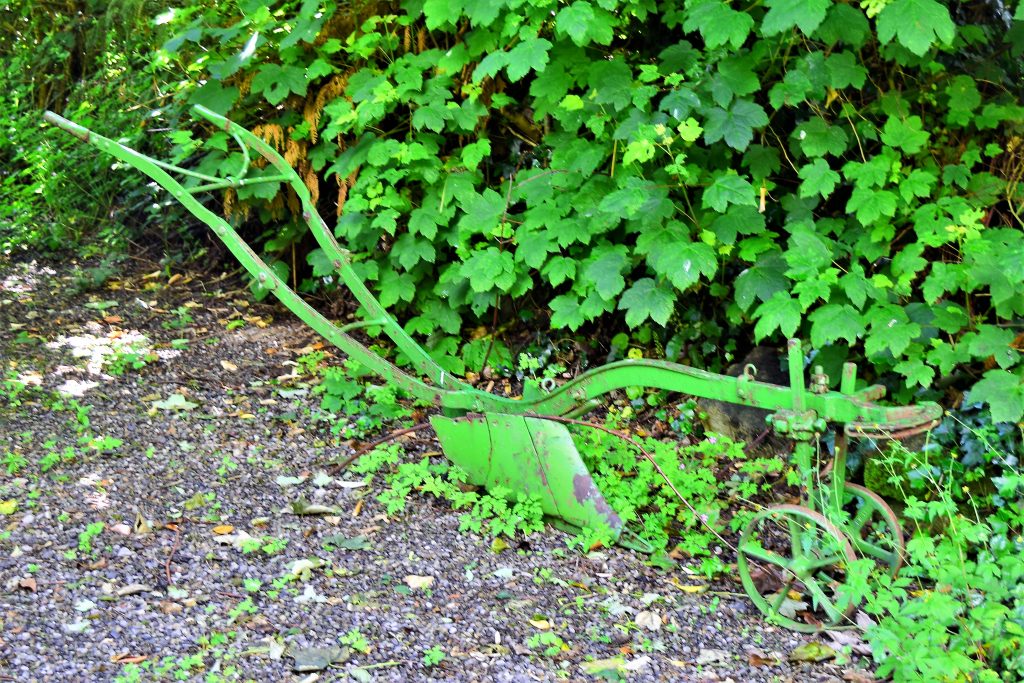
I first saw these steel designs in Dublin at the Blooms Garden Show in 2011 where a young College of Art student , Jack Harte , was exhibiting his steel flower creations and at the end of the show he had three designs unsold . I thought they were exceptional and eye catching and Jack explained that his Father owned Harte Lighting in New Ross and had been manufaturing iron traditional outdoor lamps for nearly 30 years and Jack noticing that there were always off cuts of steel left over on the factory floor asked his Dad could he use them in his studies at the College of Art and out of this came his designs for the flower creations … we ended up doing a deal and I bought the three remaining metal flowers which we installed in the immediate back garden .
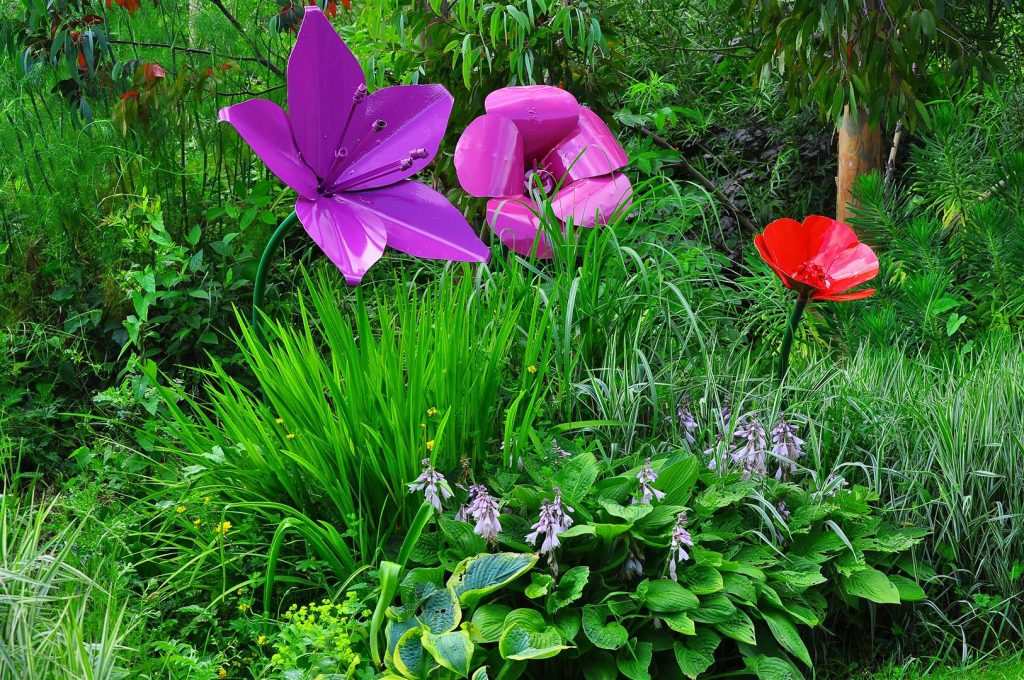
When installed we liked them so much that I ordered another single flower from Jack for the Lower Garden a year later in July 2012
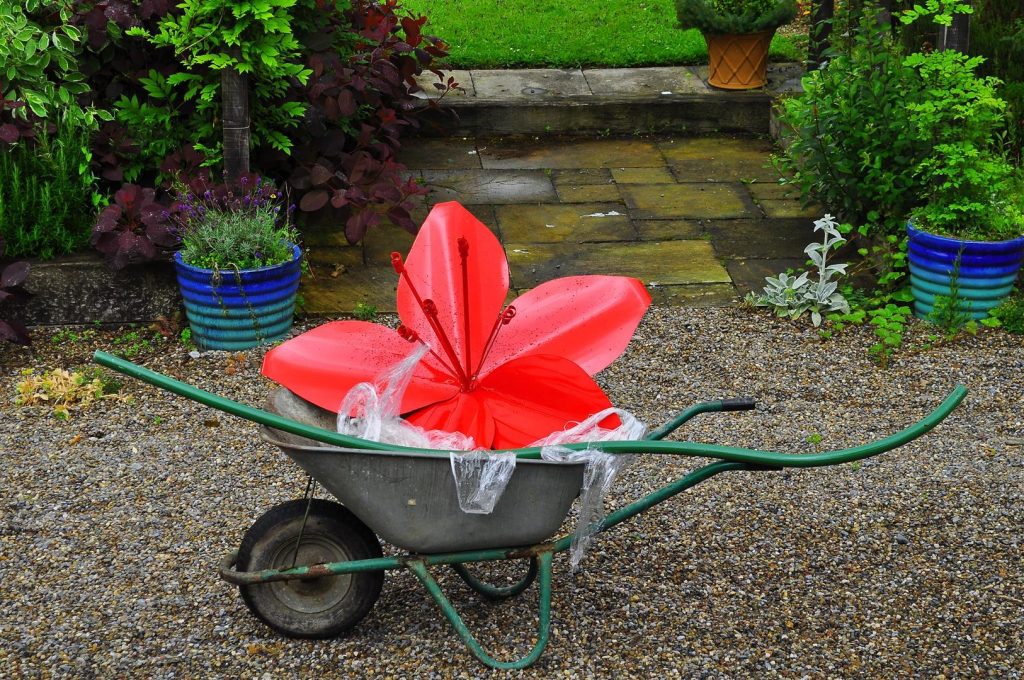
This single flower , the largest of the installations we placed in the Lower Field peeping out and over the shrubbery.
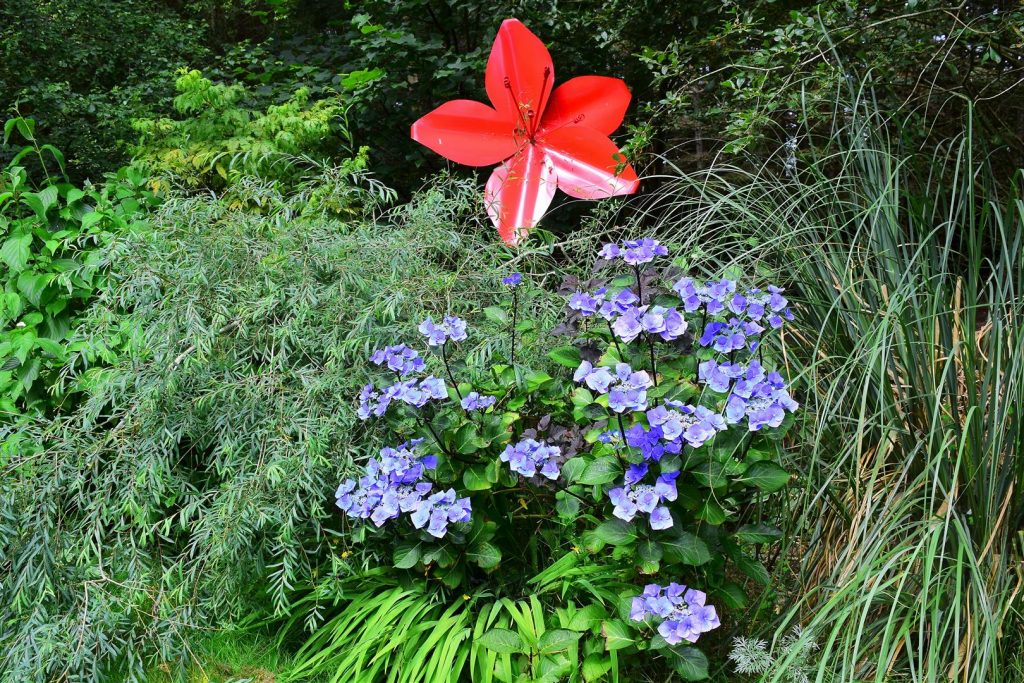
I bought this iron cannon ball in 2015 at the Kilkenny Architectural Salvage yard , it had been in the sea for over 350 years and had been handed in a week previously by a diver who found it in the sea at Rosslare Fort in Wexford Harbour . Some research showed that it was from one of Cromwell’s ships that attacked the fort in October 1649 when Cromwell’s army ran amok after the town fell and massacred some 2000 people . I have it displayed in the Gravel Garden on a length of old railway sleeper .

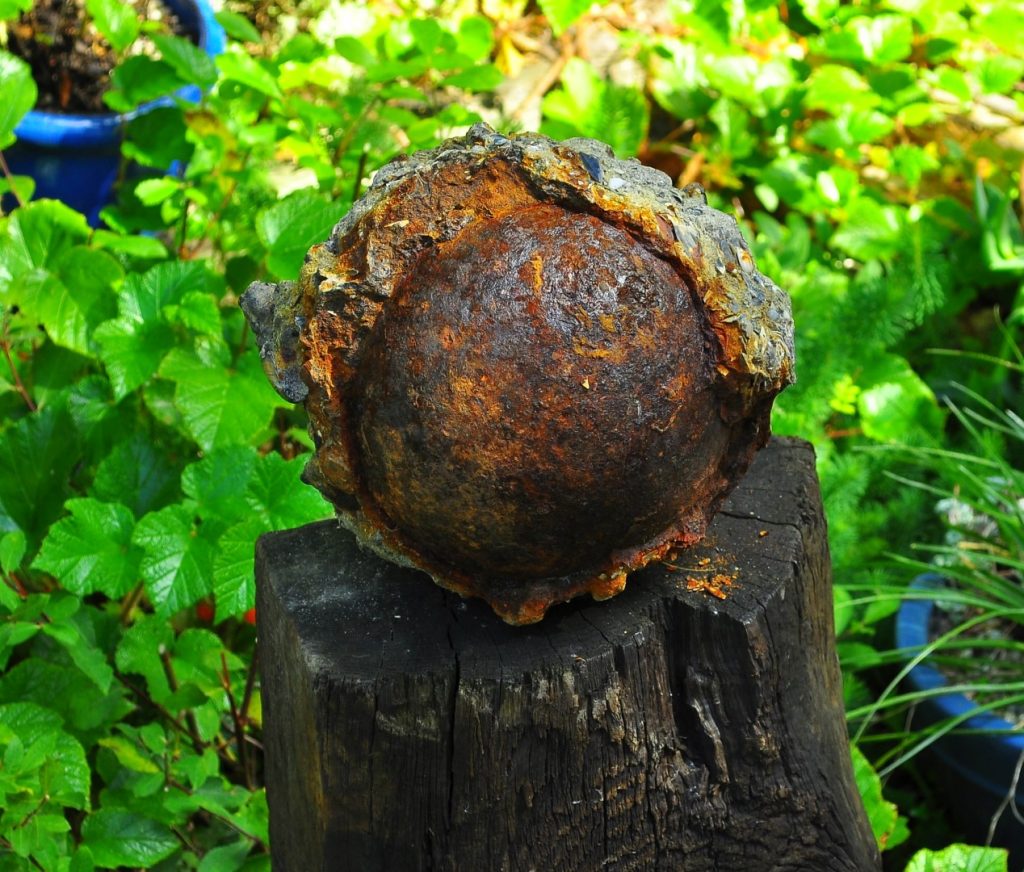
When designing and laying out a garden you try and have some focal points to take the eye and this large rock we placed in the Secret Garden to resemble an old Ogham or standing stone that you see all over Ireland from the neolithic times .
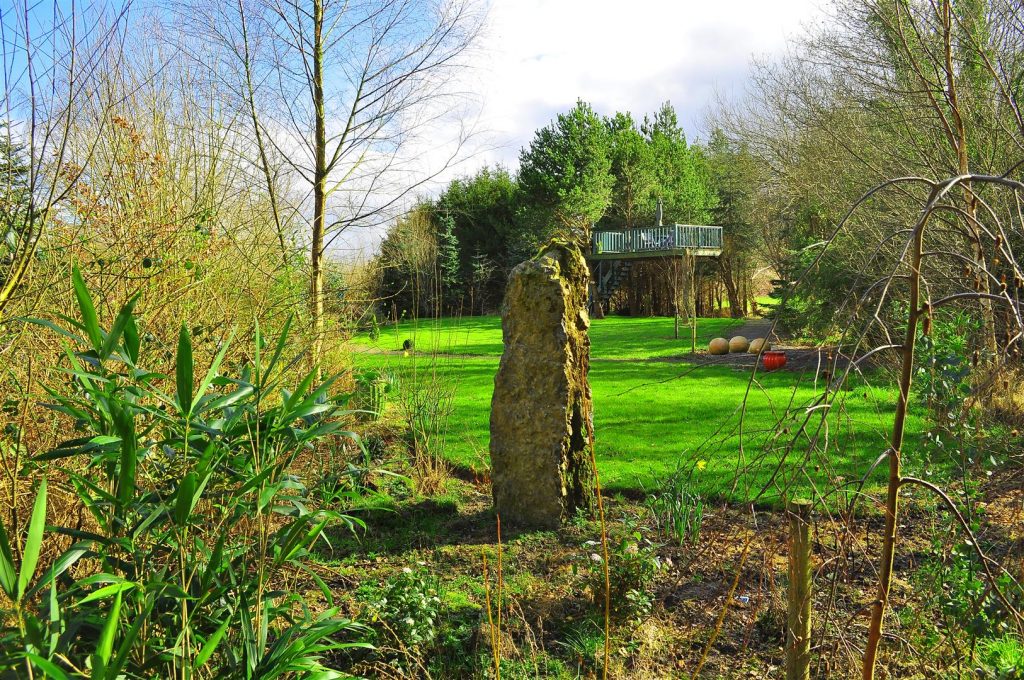
Of course you can’t beat the real thing which I photographed in Co. Wicklow in 2017 on Jimmy Blakes land at Hunting Brook .
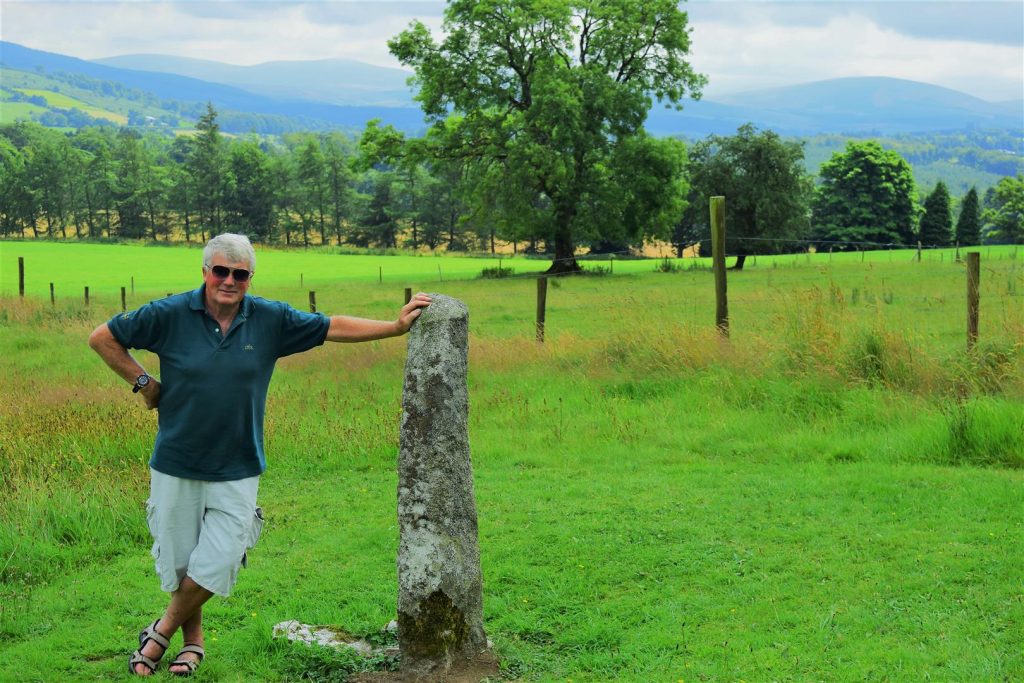
We redesigned the back patio in October 2011 and designed this piece of granite to be the centre piece that would link the view out from the garden room to the back garden . We sourced the stone at Killenaule Quarry and gave them the design and holes for the water feature and it duly arrived on the back of a truck with a large crane … boy did they f..k up , the rock was scratched and not polished and they got all the water holes out of kilter even though I had supplied precise drawings … anyway after shall we say intense discussions they sent down a stone mason this time who rectified the mistakes on site after two days working on the slab and we were good to put it in place holding our breaths that the design would actually work .
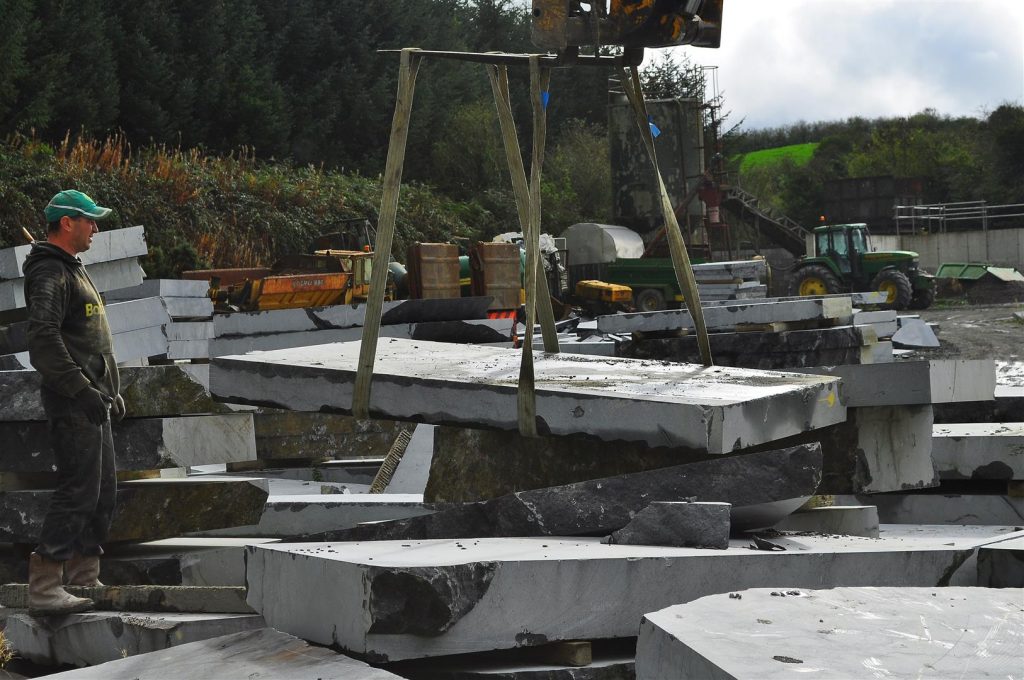
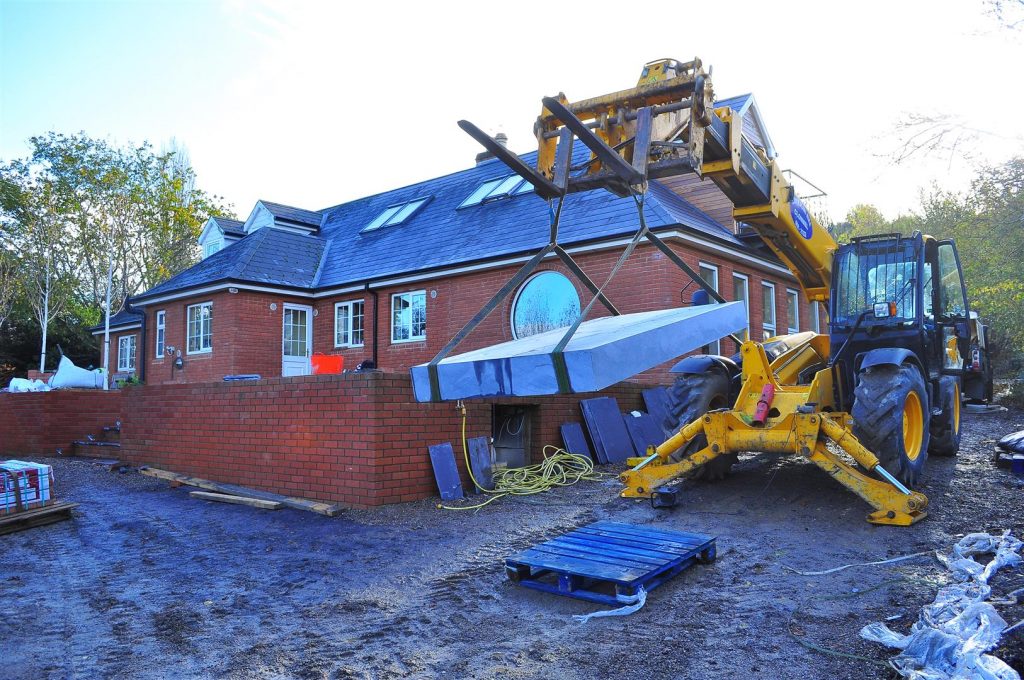
All the effort was worth it !
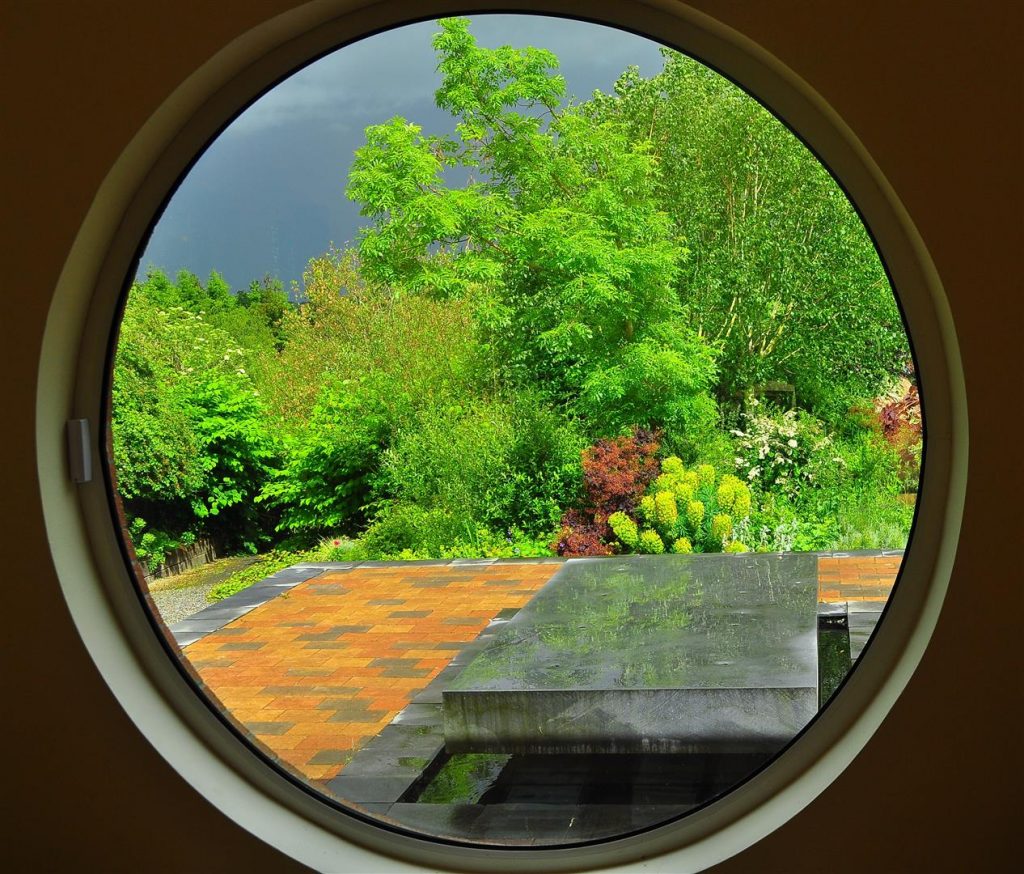
Snezana fell in love with this unusual stone avatar sculpture at Clonmel Garden Centre in August 2019 where it was stuck away in a corner , we loved it and she has found a home on our back porch .
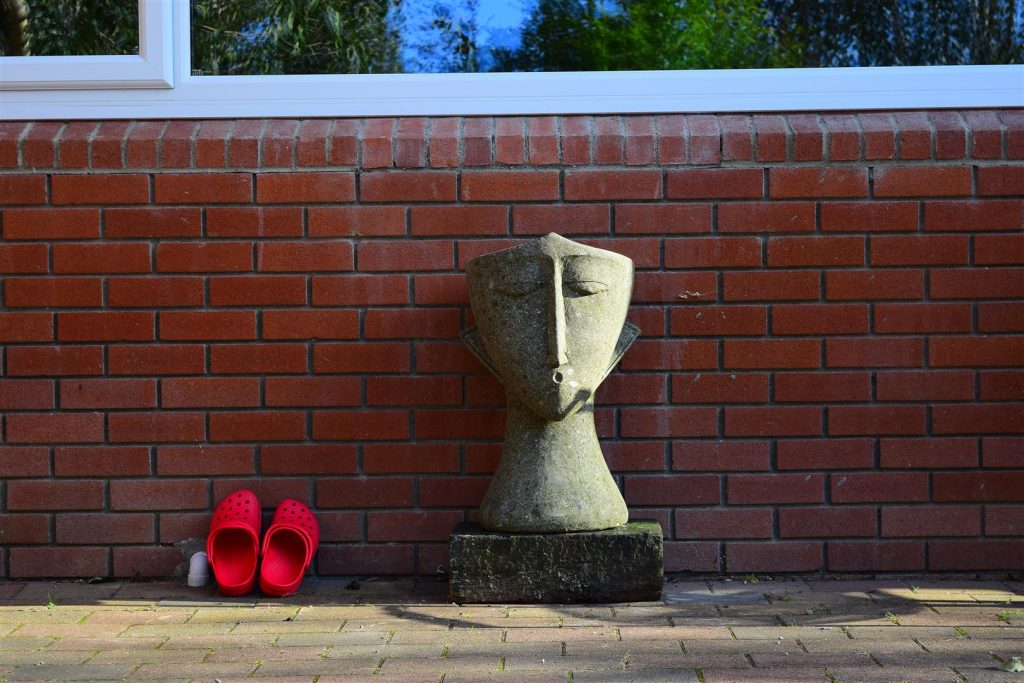
Again rooting around the back shelves at Clonmel Garden Centre Snezana came across this clay gorgon head in 2009 and for a long time we hung it down in the Lower Garden but in December 2018 we decided the front wall of the house would show it off better
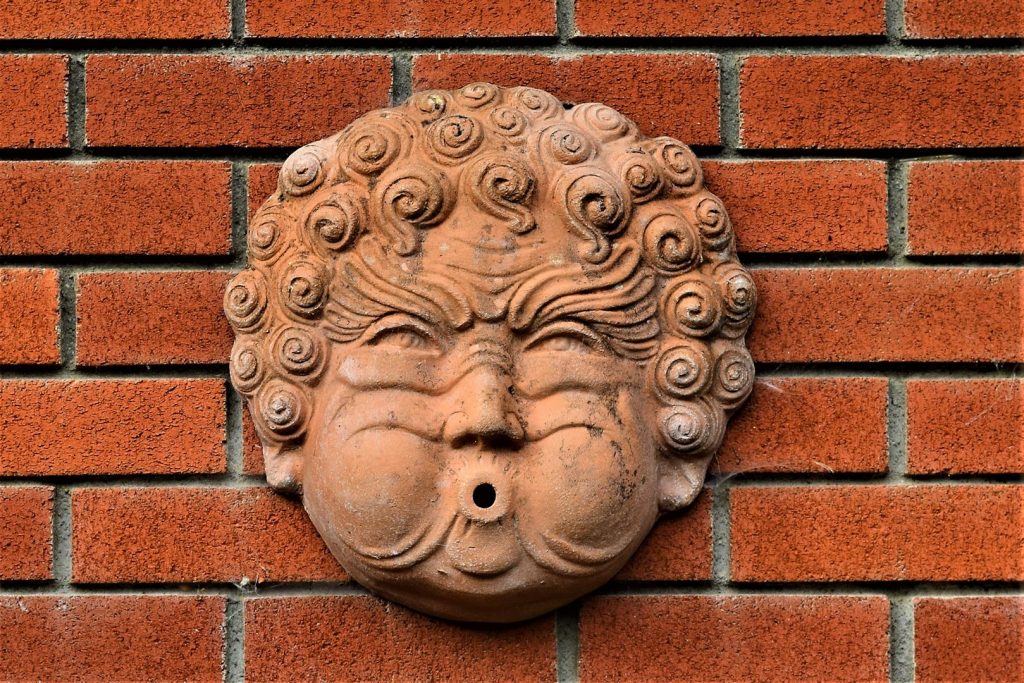
This is a second ceramic Sun King ceramic we brought back from Sicily in October 2018 and it has found it’s place on the back patio .
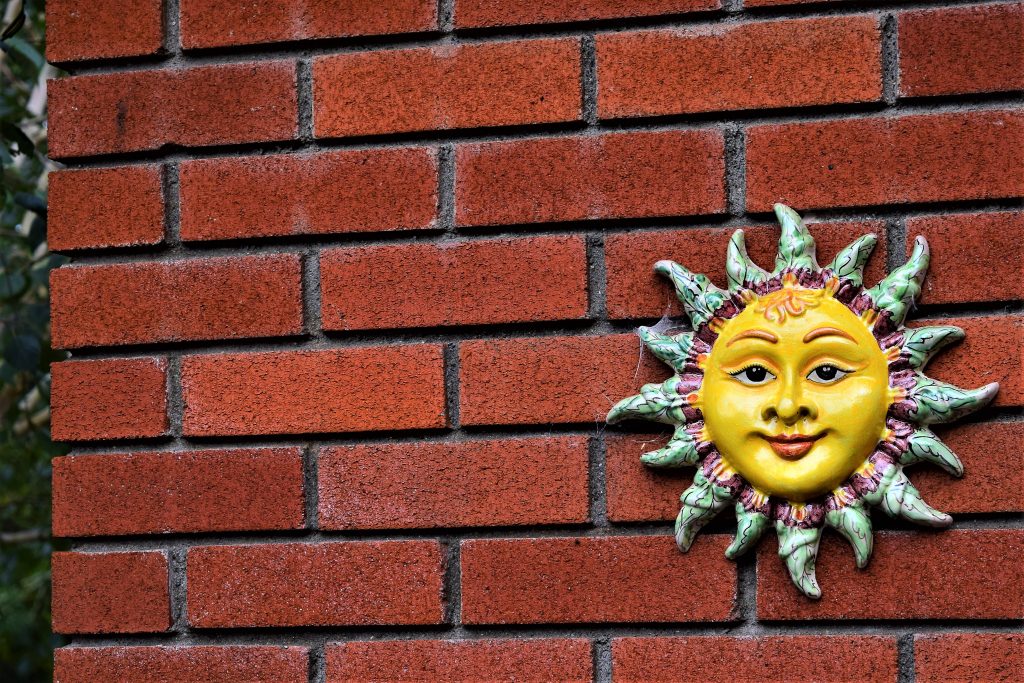
A gardening friend of mine donated this old watering can to us , still in use but it’s main use is decorative in the Gravel Garden . Janet found it in her garage when she moved into her house in Clonmel in 1972 and it was old even then and probably dates from the 1930’s .
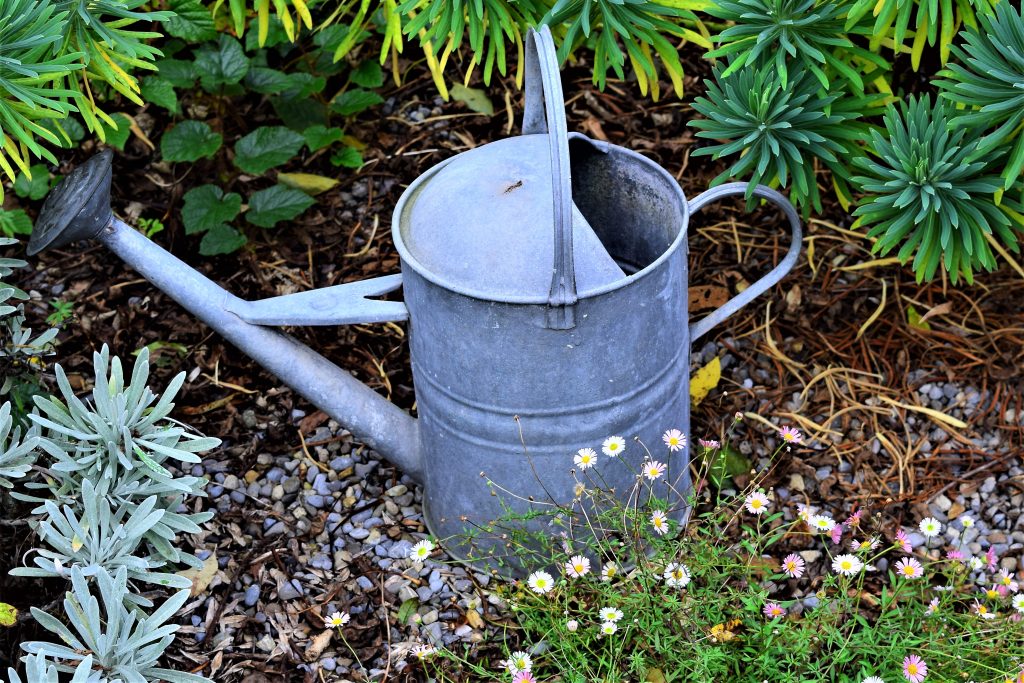
The outdoor shower is set into old railway sleepers from Bosnia where they were laid by the Austrian Government in 1890 connecting Sarajevo to the Dalmatian Coast of Yugoslavia and this railway line carried the body of the Arch Duke Ferdinand back to Vienna in June 2014 after his assassination in Sarajevo , the event which provoked World War 1 . We bought a bulk lot of the sleepers in Dublin when they were imported from Bosnia in 2010 , the lion head ceramic is from Sicily in 2018 .
When we show the shower to garden visitors and explain that we shower outside 365 days a year the without fail question every time is ” is it heated ” and no it is freezing !
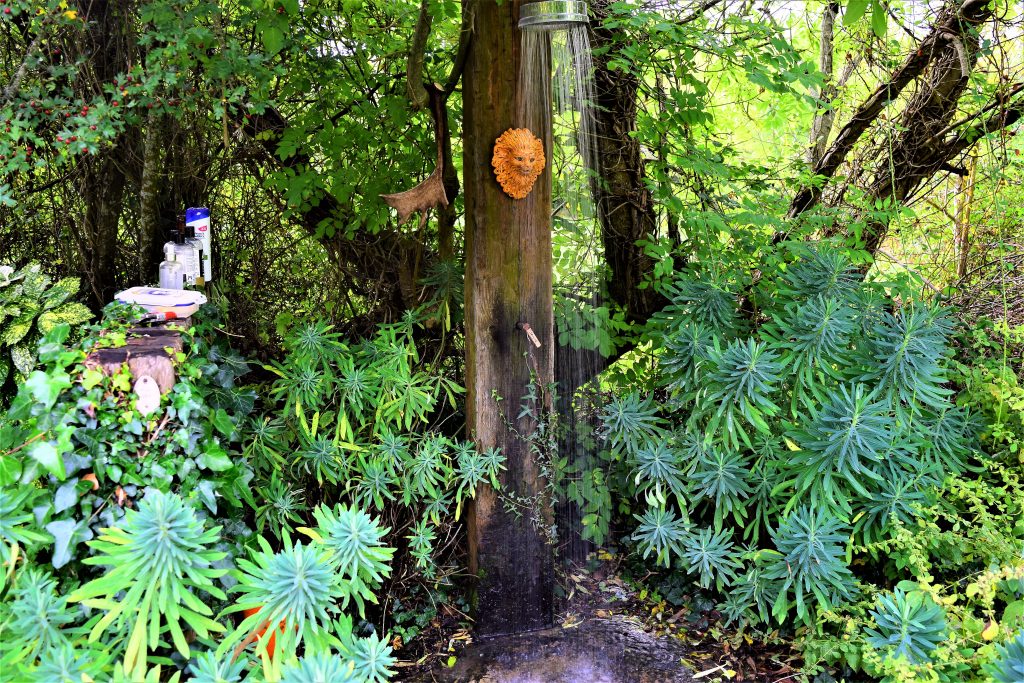
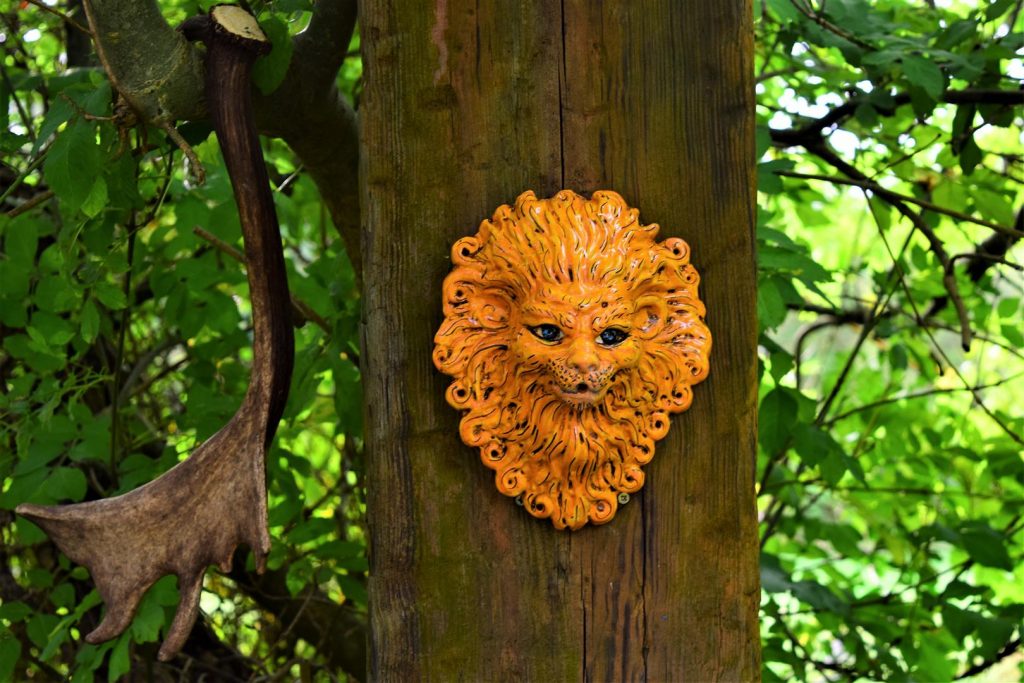
The antique hand scythe and industrial wheel were donated to us by Pascal Mansfield in 2019 who came across them on an old farmhouse he was renovating .
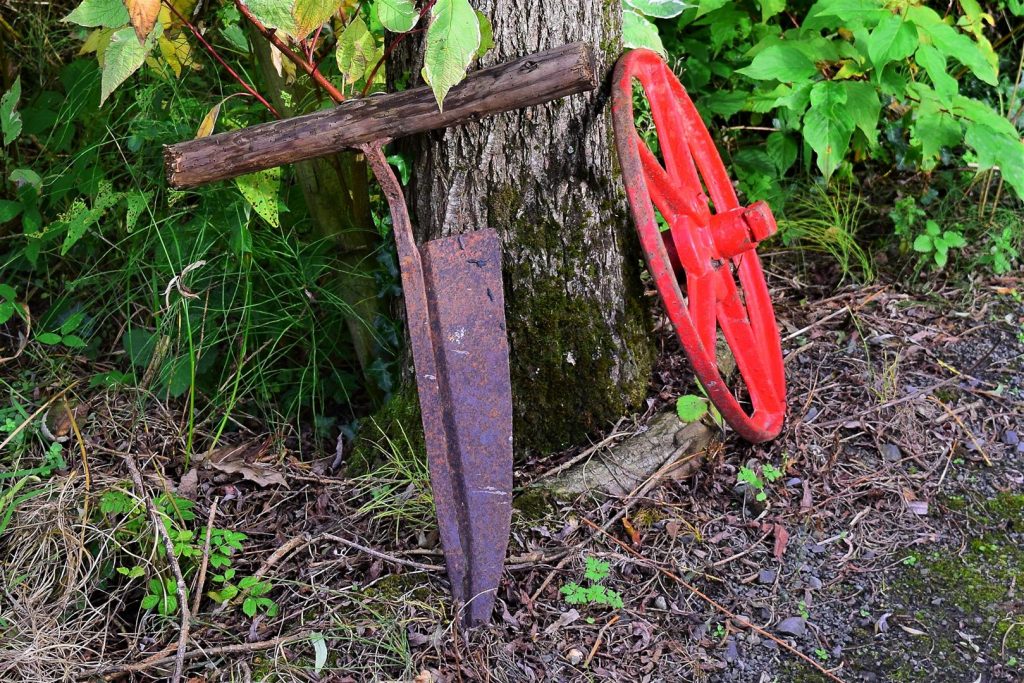
This very old paving slab was set into the front wall of the house before we bought it and came originally from the Quay at Clonmel which dates from about the early 1800’s and when the quayside was dug up for repair sometime in the 1940’s this slab was put into storage as a spare . It was apparently acquired from a cooperative Corporation worker in the early 1990’s when our front wall was built . I love the history of the granite slab which sat for probably two hundred years along the river Suir as it flowed through my hometown of Clonmel and in 2015 I had the name of the garden carved onto it .
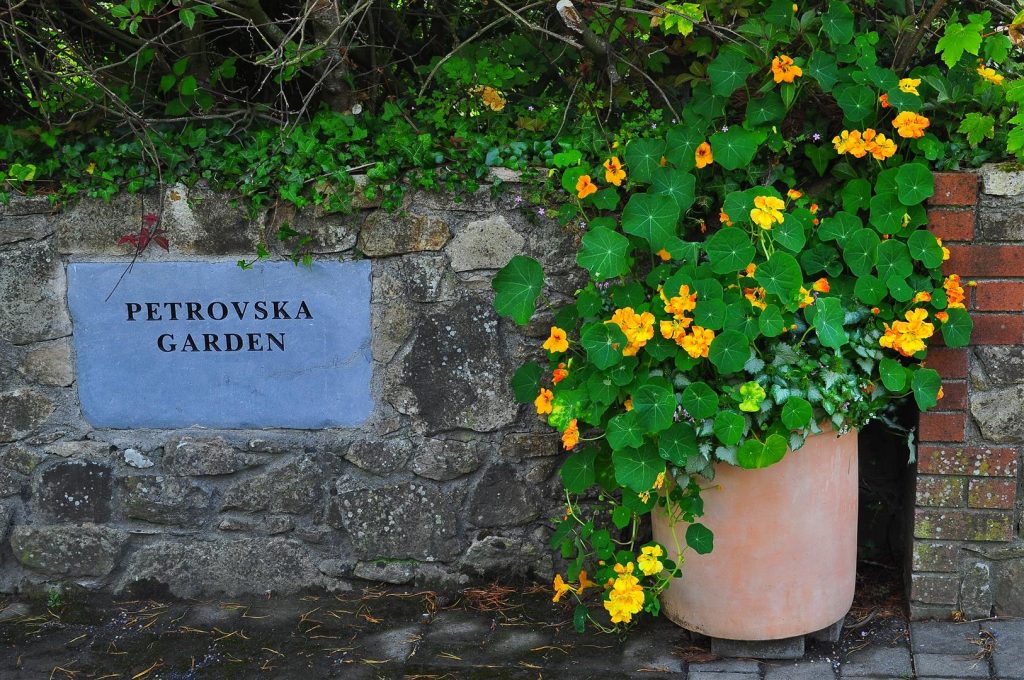
This old milk churn in the Water Garden belonged to my neighbour John Lawliss ‘s Mother and I remember in the early 1960’s travelling with one just like this with my Grandfather , Jerry O’Keefe , to the creamery in Bruff , Co. Limerick on the back of a horse and trap delivering milk and also going to the local well in Ballintaw for water for the house .
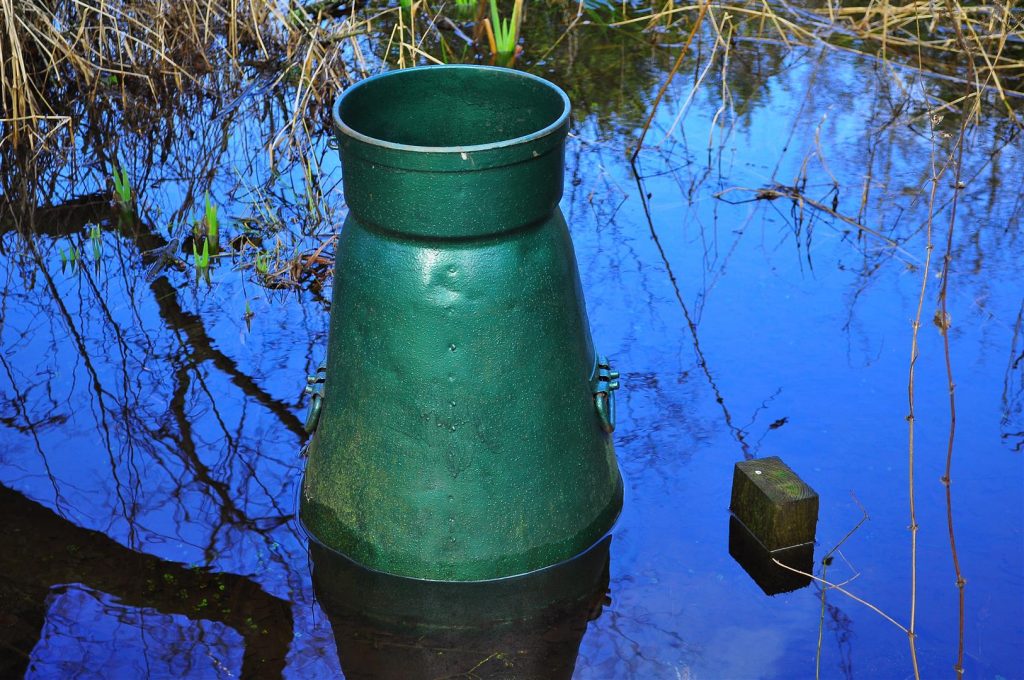
I have always loved Japanese garden ornaments but the authentic ones cost an arm and a leg and even if willing to splash the cash they are incredibly difficult to source and I ‘m guessing collectors and state owned gardens import them as one off pieces direct from Japan . Clonmel Garden Centre occaisionally stock a few replicas and we got this garden candle lantern about ten years ago and it has been moving around the garden for a few years as Japanese design really needs a special place to melt in and be at home , also they are quite delicate in that they come apart into at least three sections , are not very robust and can get knocked over quite easily and after this encounter with a curious deer right below the bedroom window the lamp was moved to it’s now permanent position high up in the rock garden !
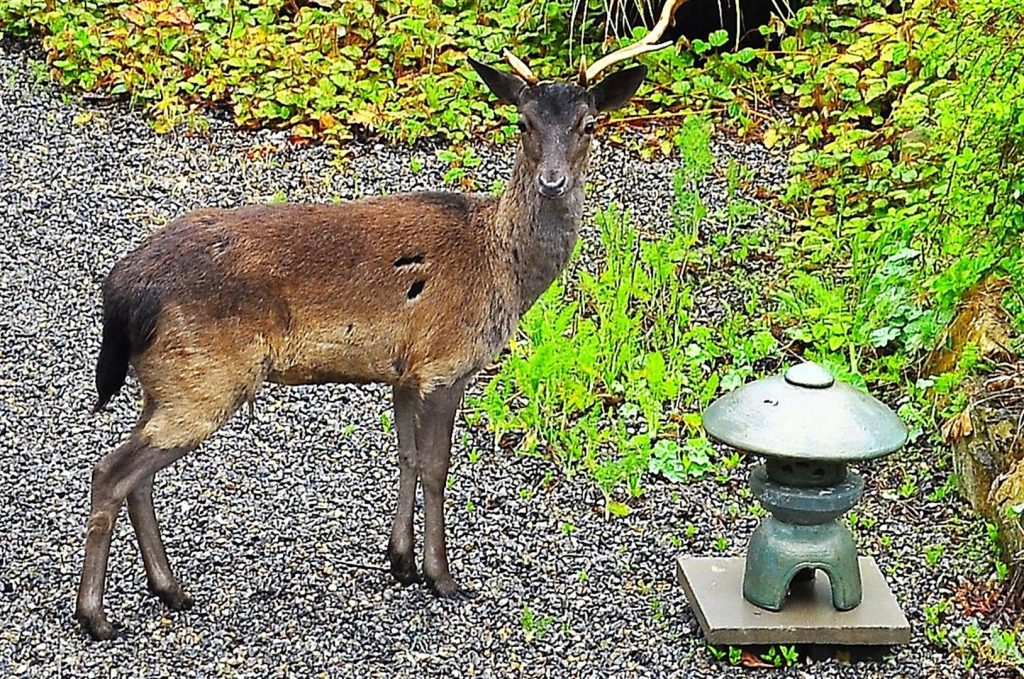
This is a modern take on a japanese garden lamp which I bought in the Clonmel Garden Centre ten years ago , terracotta , in two sections and quite easy to topple however it has survived in the Lower Swamp area all this time probably because visitors are quite happy at this point of their walk are very careful coming off the board walk without falling in to a swamp which at this point is deep enough to take a double decker bus !

And while on the subject of Japanese themed garden items this next item , a replica Kyoto concrete pot from the 17th century , was made under patent in the US and was for sale in Clonmel Garden Centre almost twenty years ago when I first saw it as one of a pair priced at 1200 Irish pounds back in the late 1990 ‘s , hugely expensive of course and even if I could have afforded it or was willing to spend that type of money on a garden container the garden here did not suit it or have a suitable location . Over the next fifteen years when visiting the garden centre I saw the pots with sold stickers on them at least three times yet they still stayed in the same place , unmoved as the prospective buyers had a change of mind . This all changed in November 2012 when we designed and built the new patio garden at the front of the house and felt the space needed a focal point as you entered it and I thought about the Japanese Kyoto pots that I had seen still in the garden centre a few weeks previously and suddenly a eureka moment these were the missing link to the design and hot footing it up to Chris in the garden centre we negotiated a knock down sale of 300 euros for the pair as Chris needed to free up space and sitting there for all of twenty years … well time to move them out !
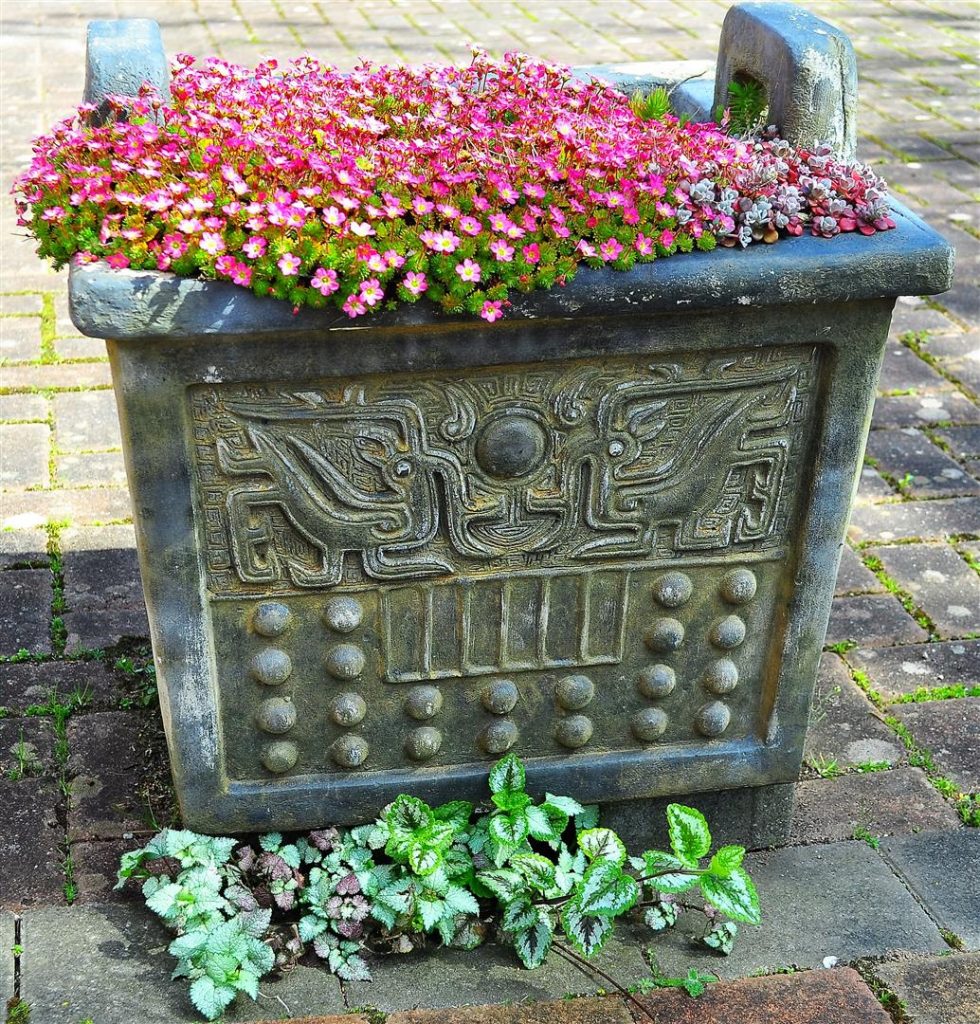
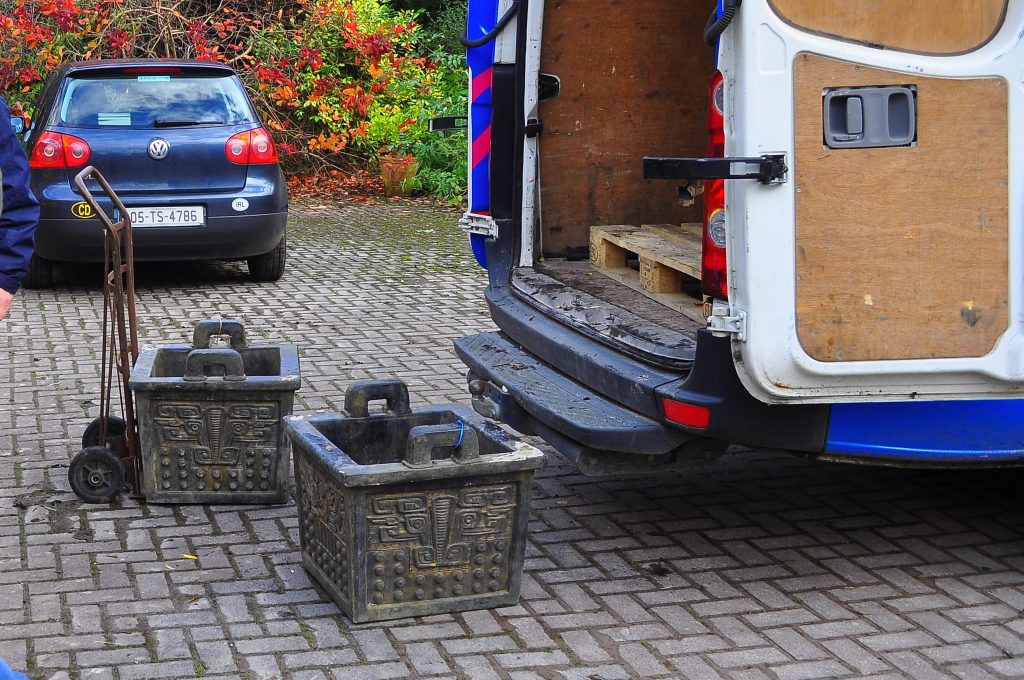
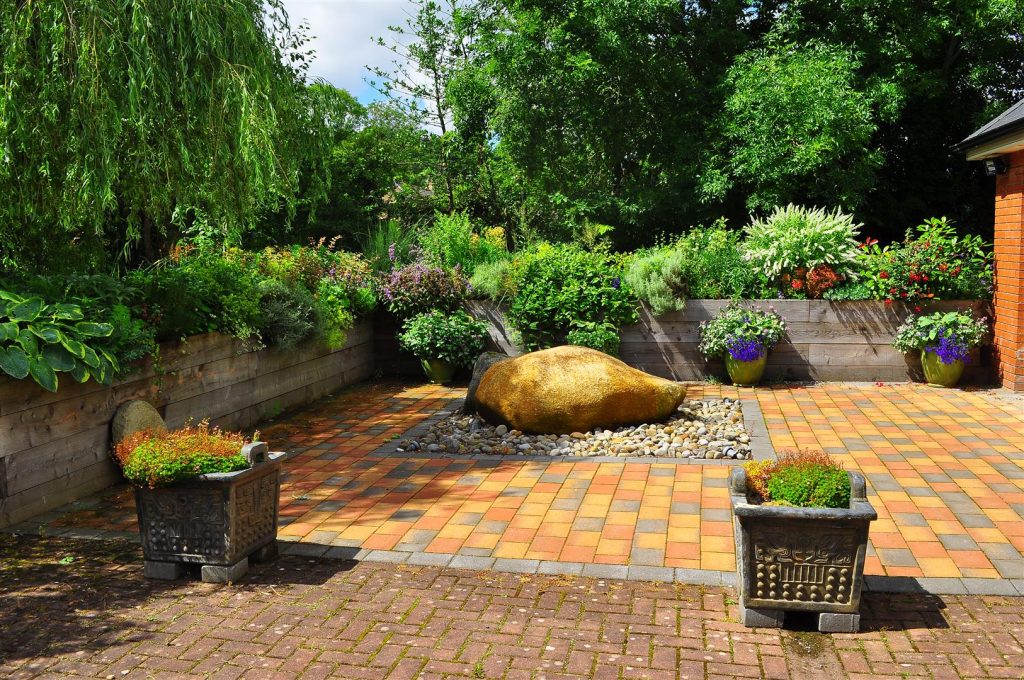
My neighbour, Sebastian ,found this old plough buried in a ditch when he took over the farm next door in the mid 1990’s and donated it to the garden .
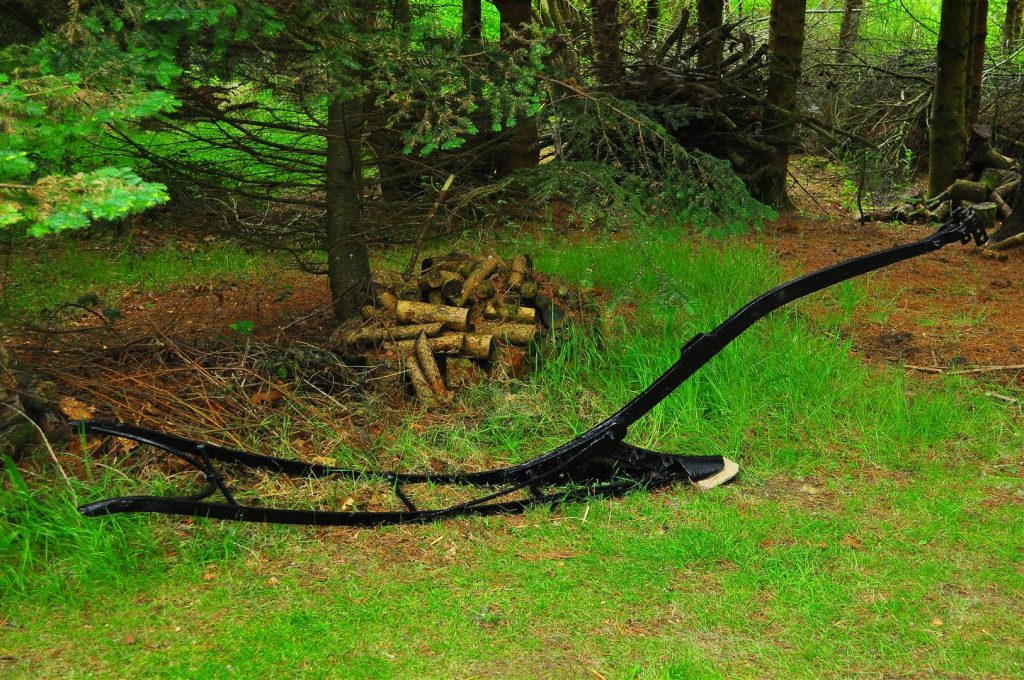
Friends of ours from from when we worked together in Sarajevo for three years in 2001 , Michael & Marta Hyrchissen , came to stay with us in 2013 and when they returned to Washington this arrived in the post … luminous so glows in the dark where it sits in the Lower Wood !
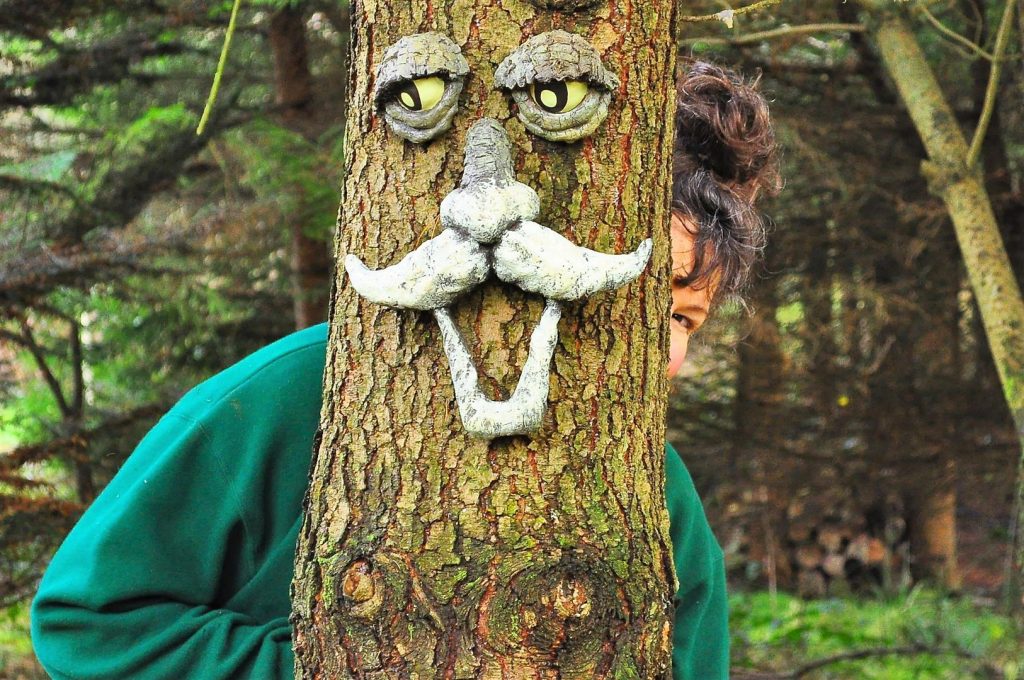
I bought this old quern or grinding stone in 2015 from a Co. Clare farm and it stands in the front garden where I can see it every morning and it is about 400 years old and would have been used for grinding corn . The design hasen’t changed for over 6000 years and you see them in museums all over the world .
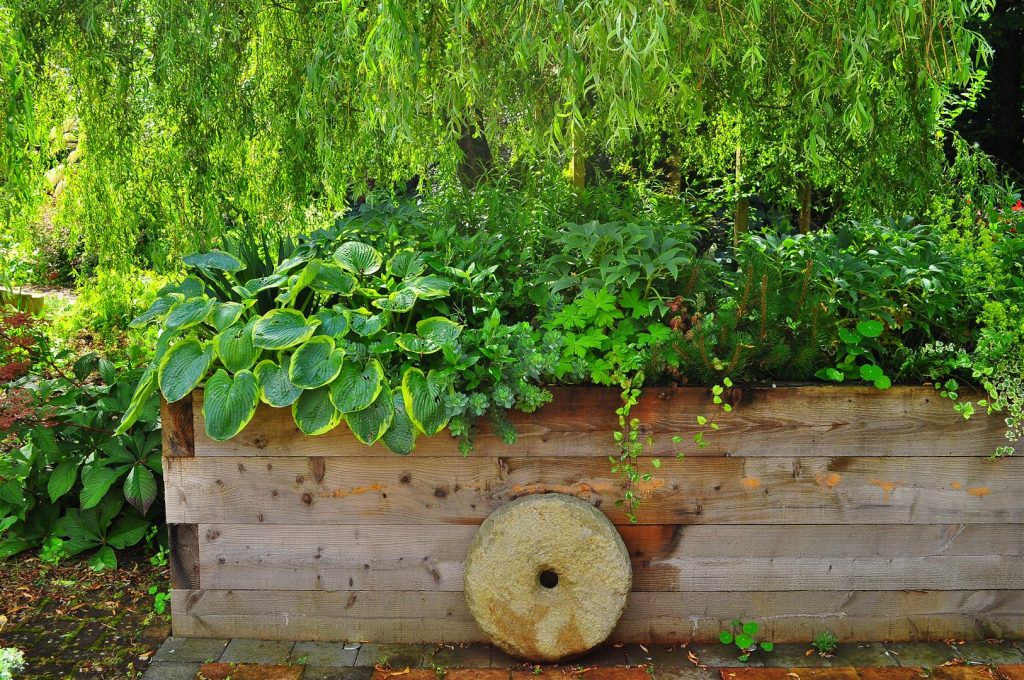
I bought this horse tethering stone at an auction in Clonmel and it was used on barges on the River Suir being pulled upriver from Waterford Port in the late 1800’s .and it now sits in the Front Garden where I can see it from inside , it is a piece I am really fond of both for it’s history and it’s practical use and I would imagine it would look equally good indoors .

In 2010 my kids bought me this Mother & Child sculpture in memory of their grandmother , my mother , Anna O’Riordan , a lovely woman who put all her kids and especially me ahead of herself . The sculpture had blown over in a storm and lay with it’s feet broken and unloved in a corner of Clonmel Garden Centre and it was sold off at a fraction of it’s price and it has found a home in the Lower Swamp Garden where every time I see it I am reminded of my Mam .
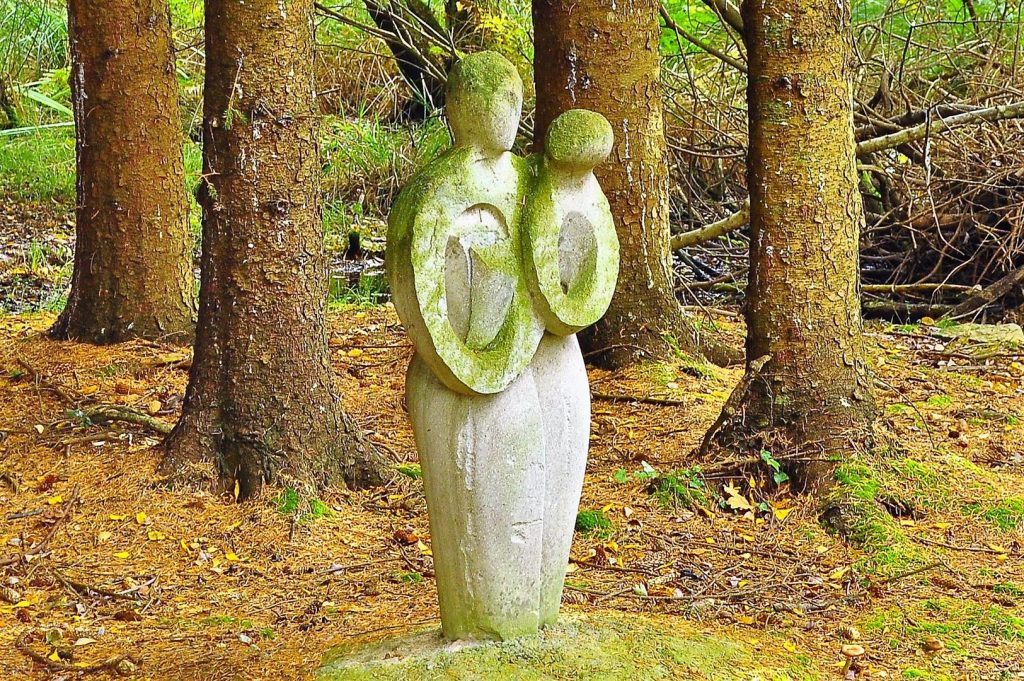
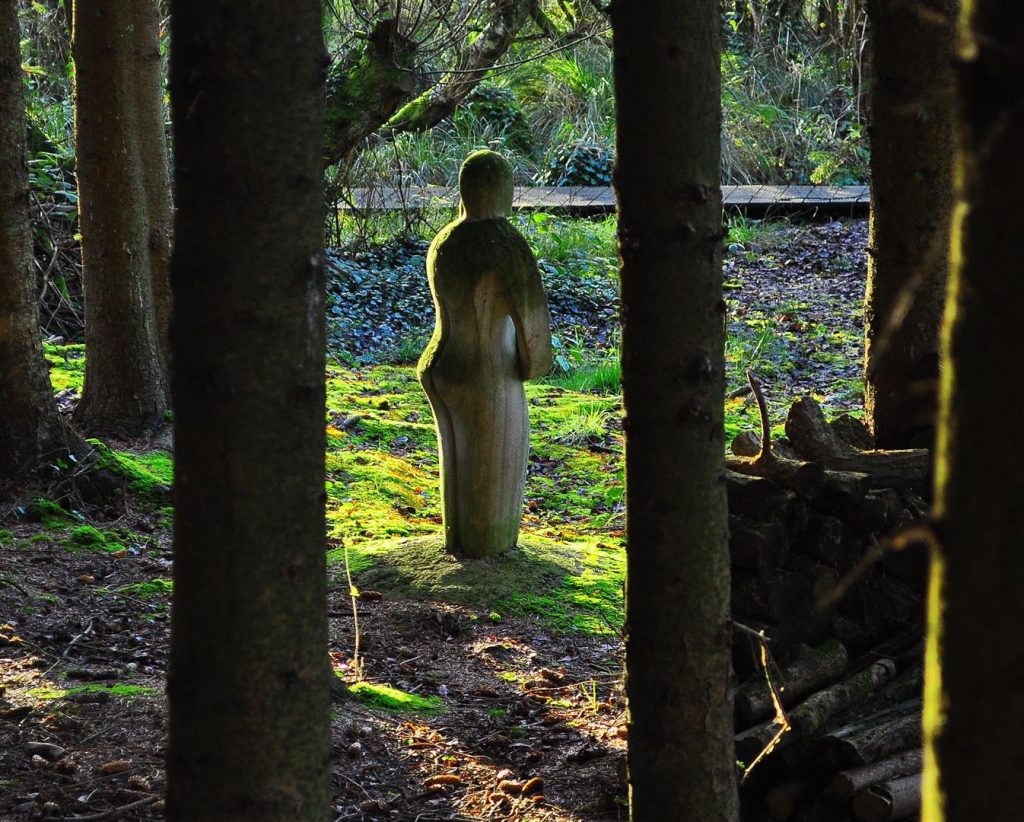
I have always been attracted to old stone garden troughs which started life as water for cattle out in the fields but became fashionable with gardeners as planters for alpines in the 1920’s , much in demand , very expensive and heavy to move without specialist equipment and difficult to get one in good condition . I bought this one in the Kilkenny Architectural Yard in 2008 and originally had in mind to place it at the front of the house but it looked totally out of place close to a modern building and over the years it has been moved several times with a digger until recently it found it’s final place in the Gravel Garden .
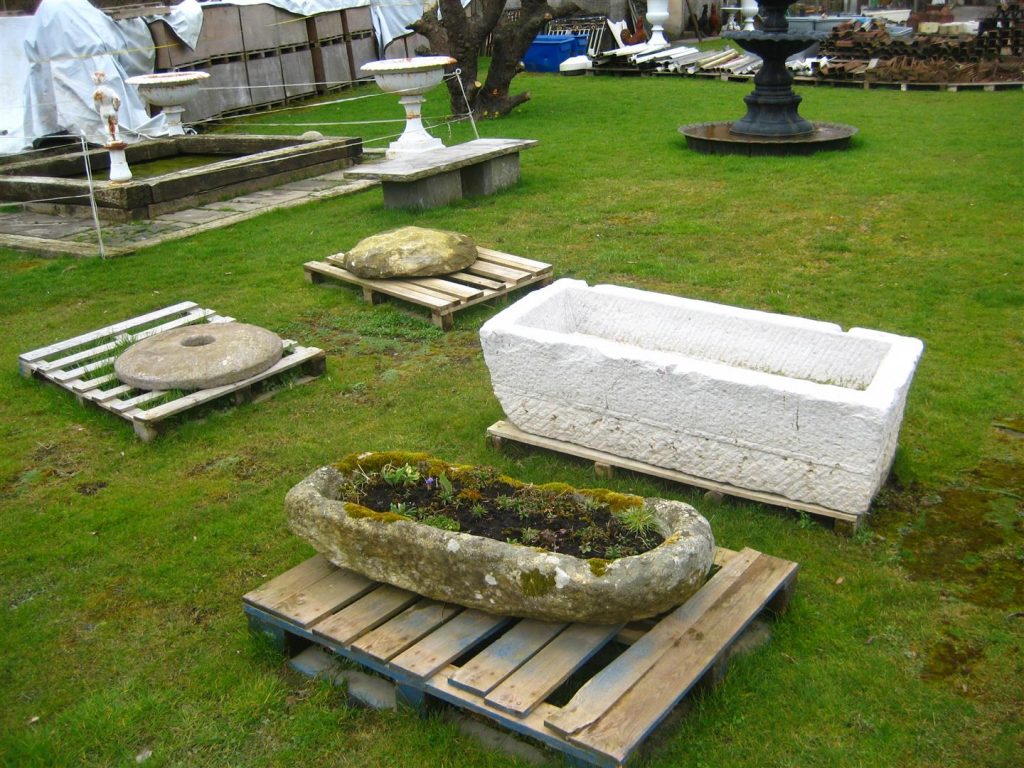
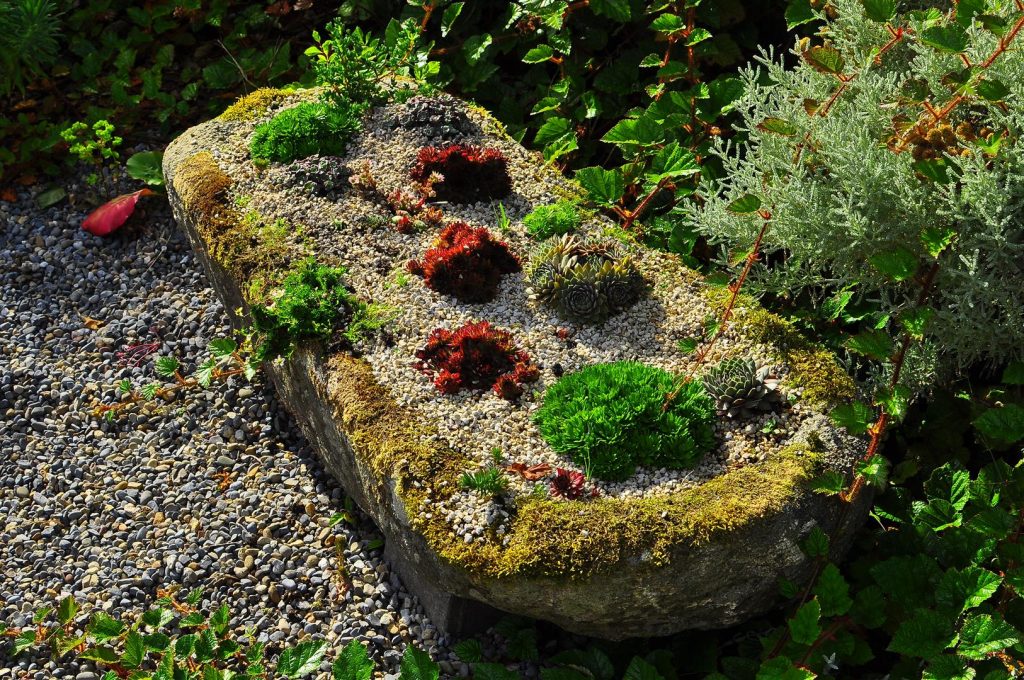
When we designed the front garden patio outside the garden room we needed a central feature to focus the view from inside and came up with the idea of a water feature from a large rock and Peter Cullen found the perfect stone in a quarry at Manor Stone in Littleton just after it was dug up . When I went to see it a day later there was a smaller rock beside it like a primitive Henry Moore mother & child that I also bought … well that’s what it reminded me off but they complemented each other , looked like a family , and I couldn’t take one without the other !
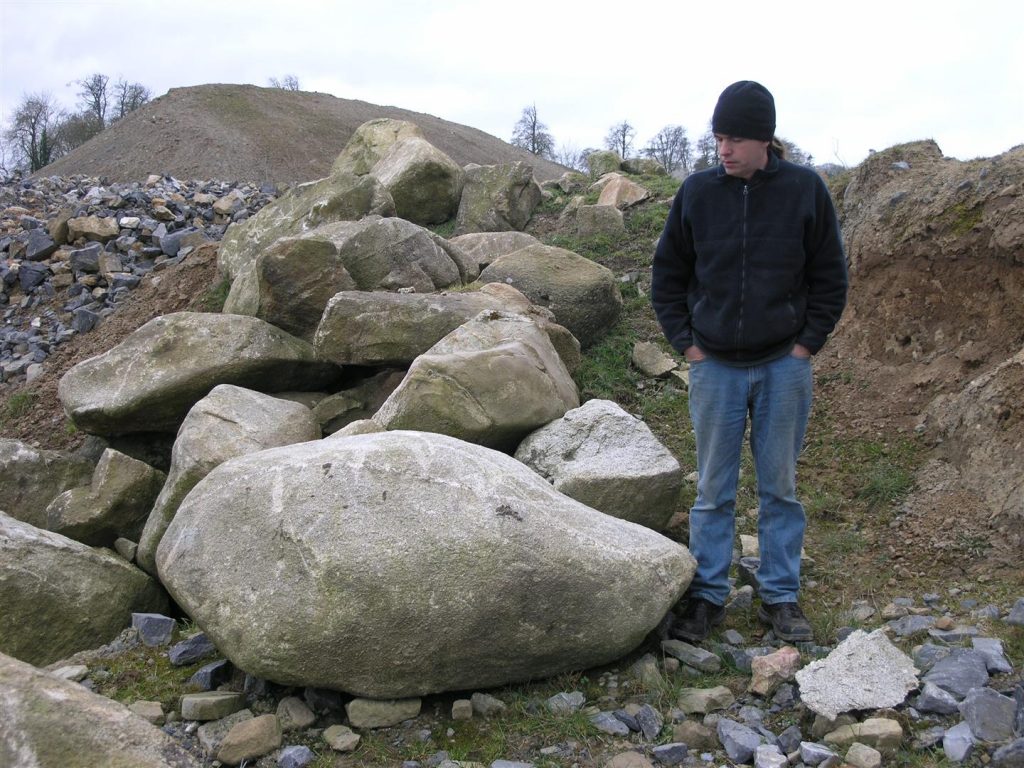
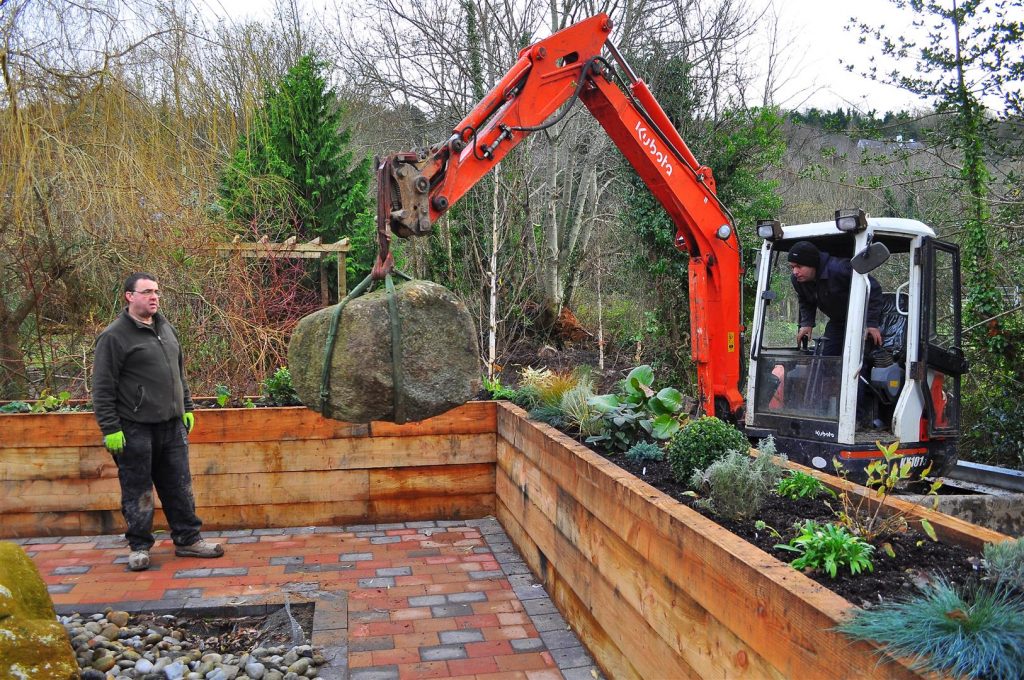
And the finished result was worth all the effort
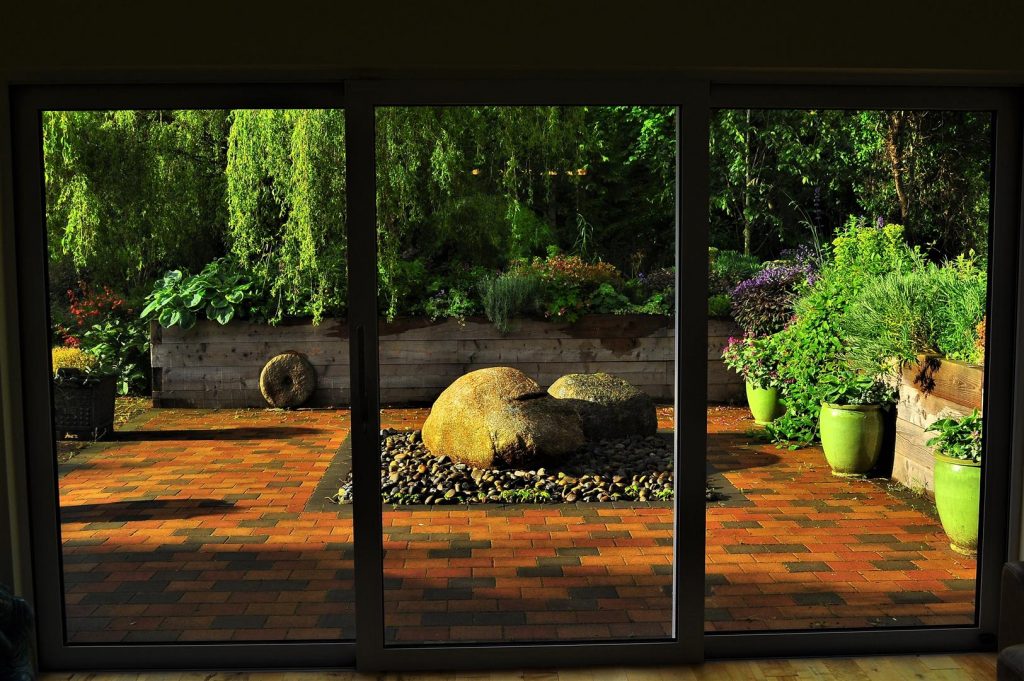
Pascal Mansfield has been a great provider of unusual items for the garden collected during his work as a building contractor so when he rang me in February 2016 to say that he was working on demolishing a stone chimney in a two hundred year old house in the Narrow Steet in Clonmel once owned by Charles Bianconi who established the first horse drawn coach service in the south of Ireland and who died in Clonmel in 1875 . Pascal’s brief was to dispose of the old stone from the chimney and would I like them …. hell yes natural stone is always useful in a garden but stones from such a historic house , what a find ! Pascal delivered two trailer loads which I used to build six raised stone beds in various parts of the garden and it has added to the narrative of the garden when showing visitors around .
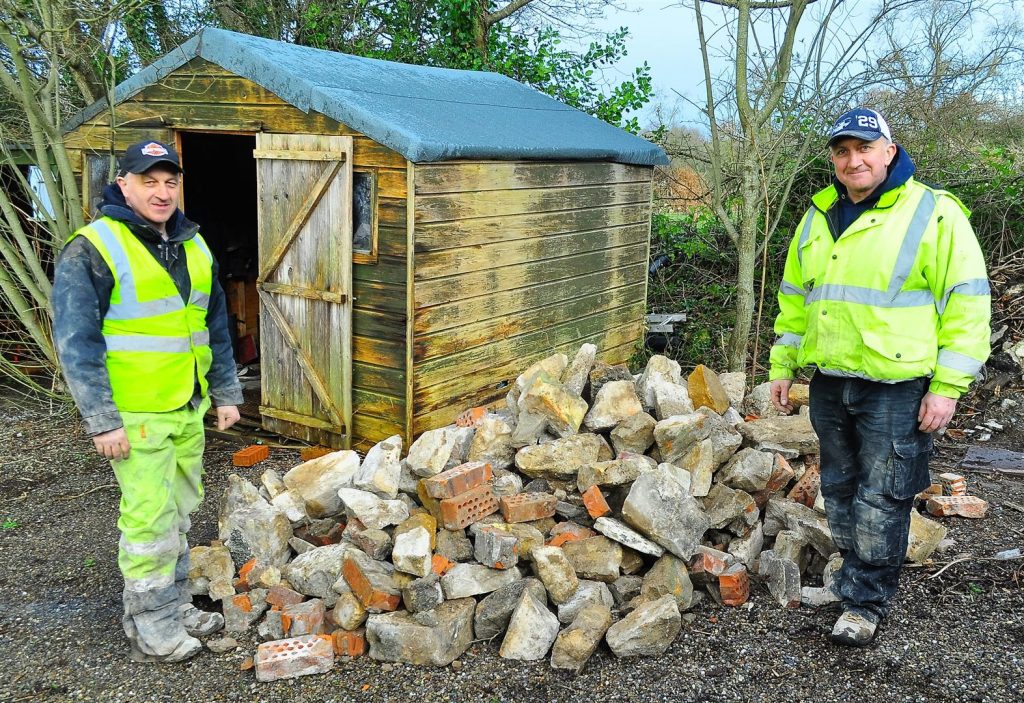
And the stones were put to good use


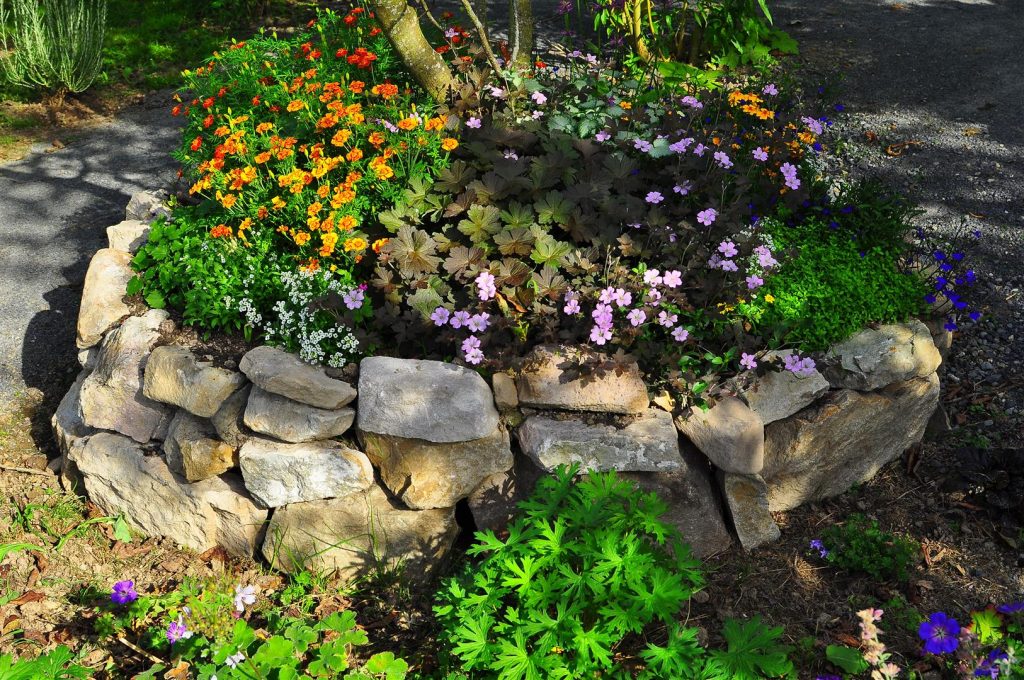
A big garden like this can take agricultural bits and pieces and not look tacky and I bought these two beet mashers at an auction in Clonmel in 2016 and placed them in the Lower Wood area and of course being a townie I had no idea of the hard work that went into turning the wheel manually and crushing the beets and turnips for animal food but regularly female visitors to the garden with a farming background who would have grown up on farms in the 1940’s and 50’s remind me just how awful it was as kids to be out in the farm yard in the wind and the rain turning this for an hour or so … and it always seemed to be the females of the family who got this job and certainly they looked on these machines with less nostalgia than I did !
Bad memories aside I love these vintage agricultural pieces and get a real kick from seeing them in the Lower Garden .
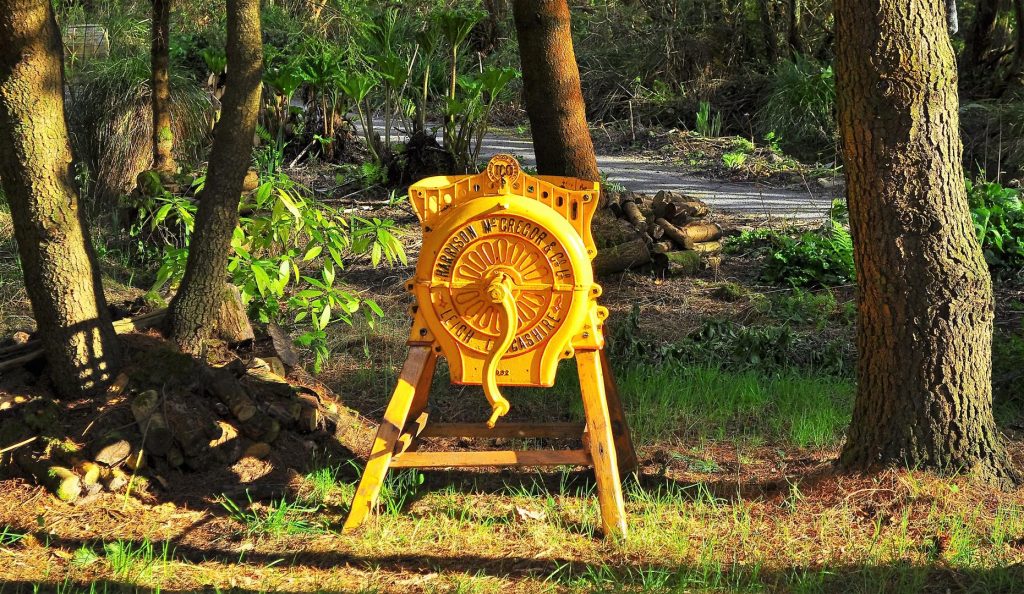
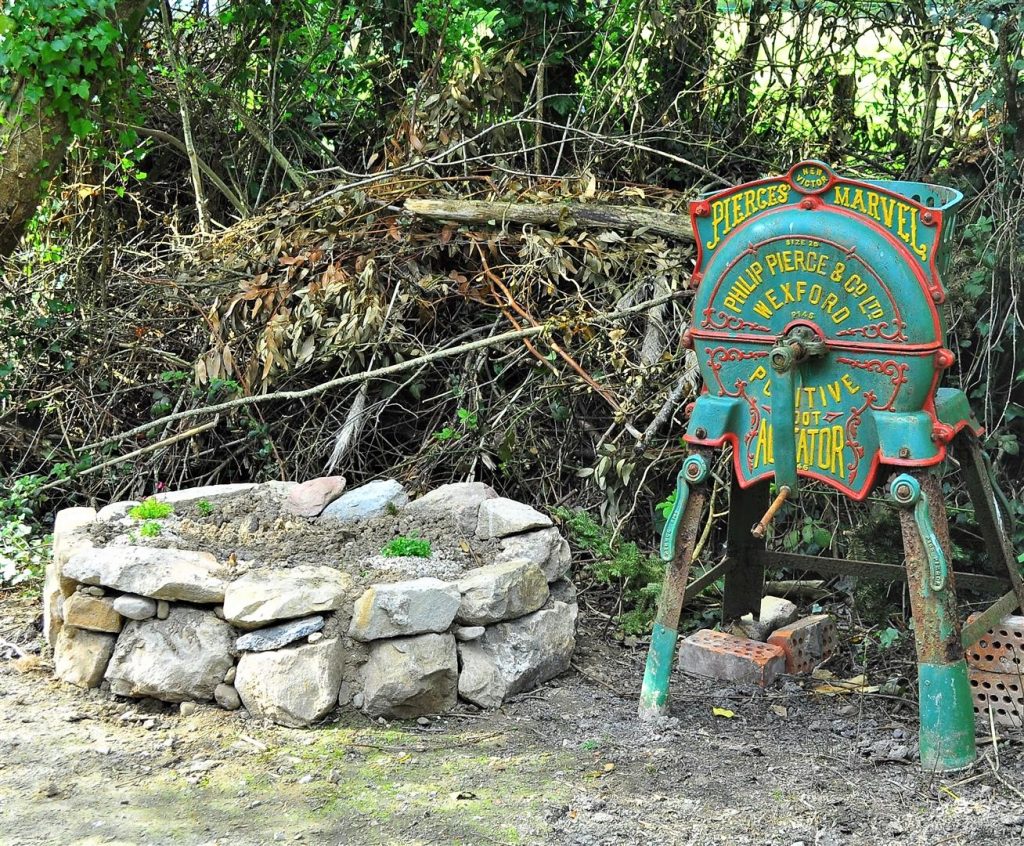
My neighbour , Sebastian Boisson , found this on his farm , an old wheel from a harvesting machine , a coat of paint and it found a home in the Lower Wood in April 2014 .
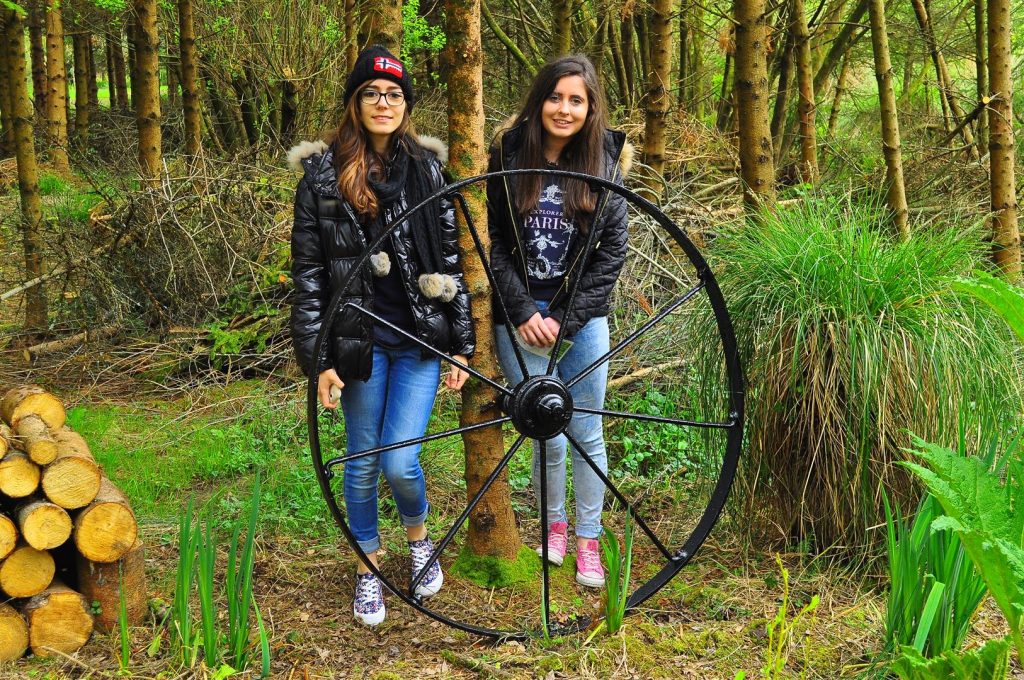
One of the first items we placed in the garden after the paths were installed in October 2008 and again thanks to our neighbour , Sebastian Boisson who discovered it in an outhouse when he took over his farm back in the mid 1990’s . We like to think some old boy has just parked it there while he went off fishing and it is one of the most photographed items by visitors to the garden .
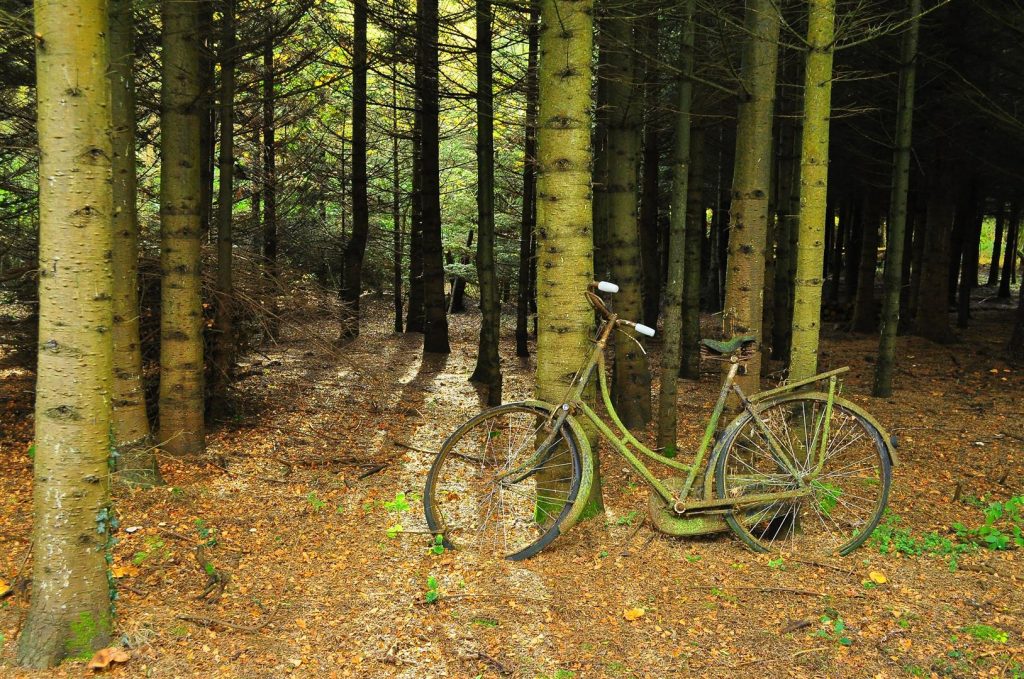
Snezana found these unloved and unwanted terracotta spheres in the Clonmel Garden Centre about ten years ago and I think they were intended to be used singly on top of gate pillars but we grouped them together and used them as a kind of full stop in the layout of the Lower Wood Garden .
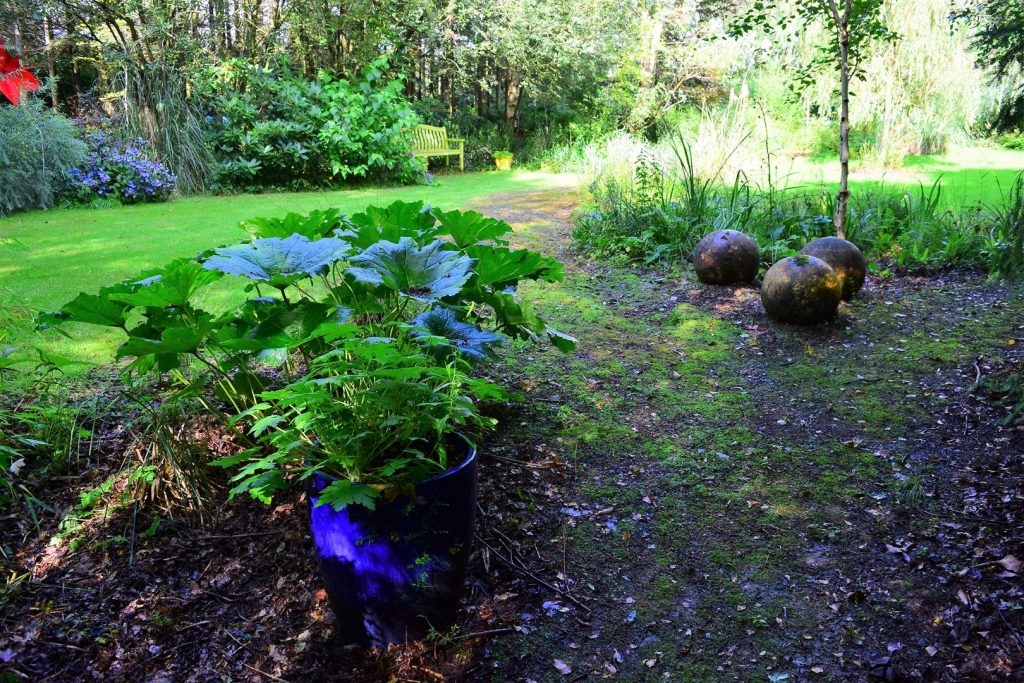
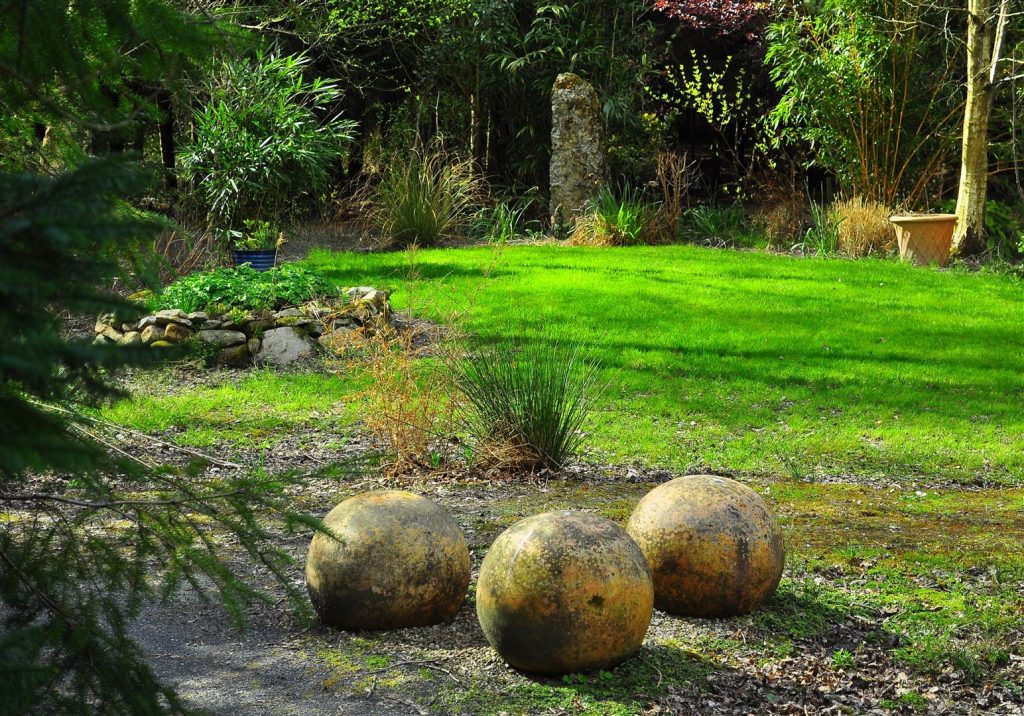
Garden furniture is garden furniture … right ? … nothing out of the ordinary there but there are two iconic pieces of garden furniture designed over a hundred years ago which are famous and recognised throughout the gardening world , the adirondack chair being one , designed by an american architect for his summer home in the Hamptons outside New York and the other is the luytens chair designed by Sir Edwin Luytens the great English garden designer of the 1920’s .
I don’t know if there are any originals of these chairs around nowadays , I doubt it as they are for outside use but there are replicas available , good and bad depending on how much you are willing to pay . Beara Wood in West Cork supplied our adirondacks and the UK company Alexander Rose made the Luytens chair that we have in the Lower Wood area .
The original colour would traditionally have been natural unpainted hard wood such as teak or mahogany however our policy here is to paint our garden furniture a majorelle blue after the great french designer , Jacques Majorelle .

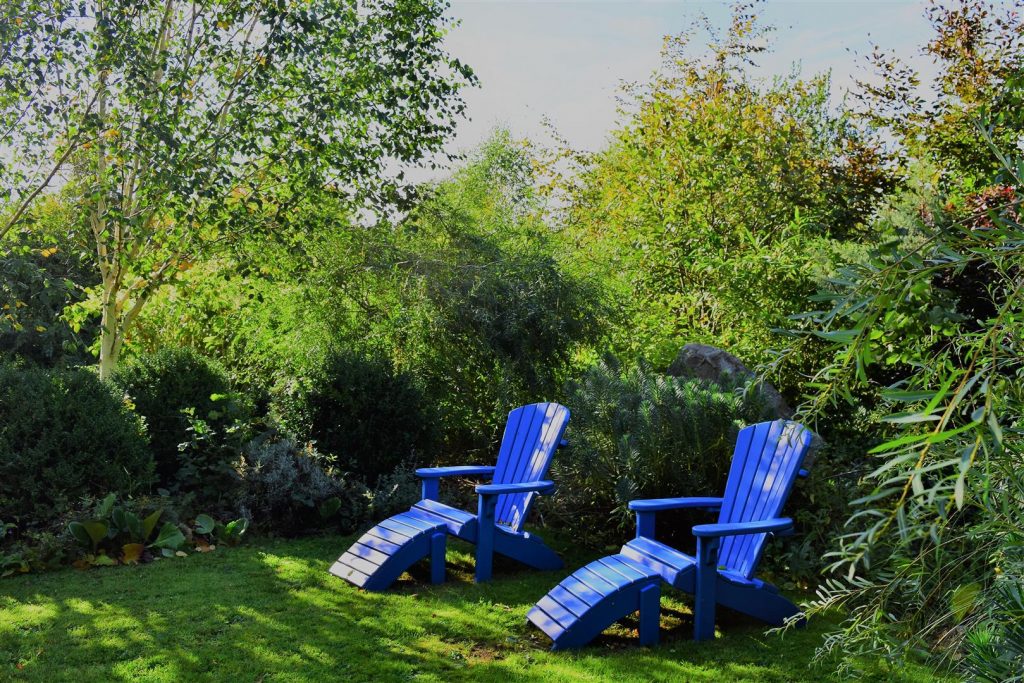
Chairs and benches also come in stone and we sourced this from Clonmel Garden Centre in 2018 .
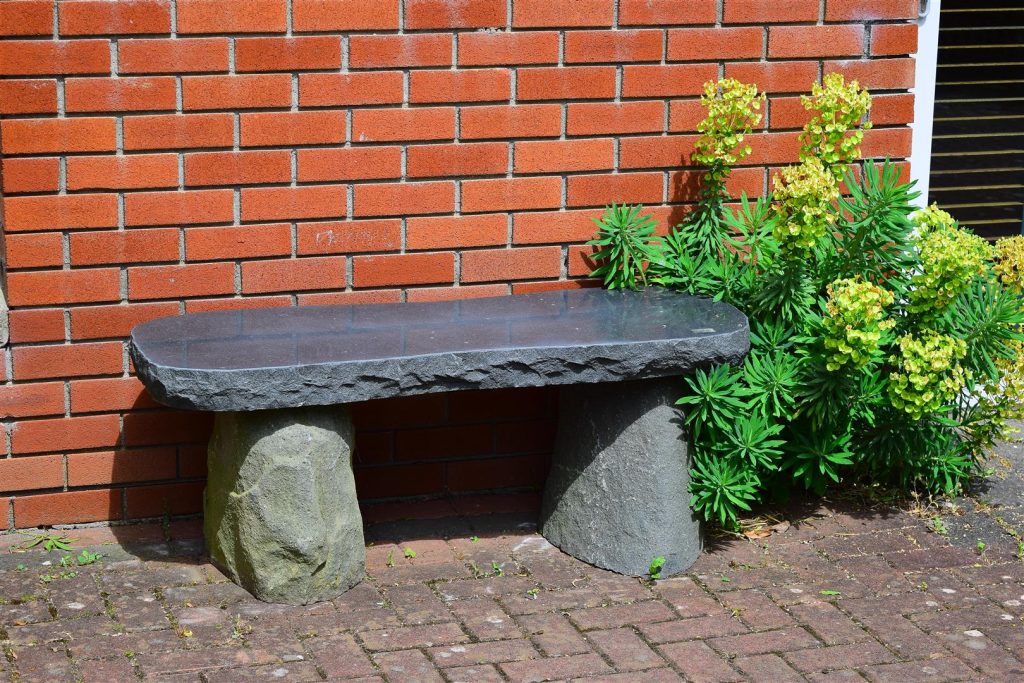
I was browsing around the Kilkenny Architectural Salvage Yard about ten years ago and saw this pair of old milking parlour buckets however I was told they were sold to a buyer from Belfast who had bought them online and would be down soon to collect them . About two years later I am back again at the Salvage Yard and the buckets were still on display … same story they were sold to a Belfast buyer etc. so I said look I am willing to buy them now so why not ring him and ask if he still coming down to collect them … he wasen’t so I got them !
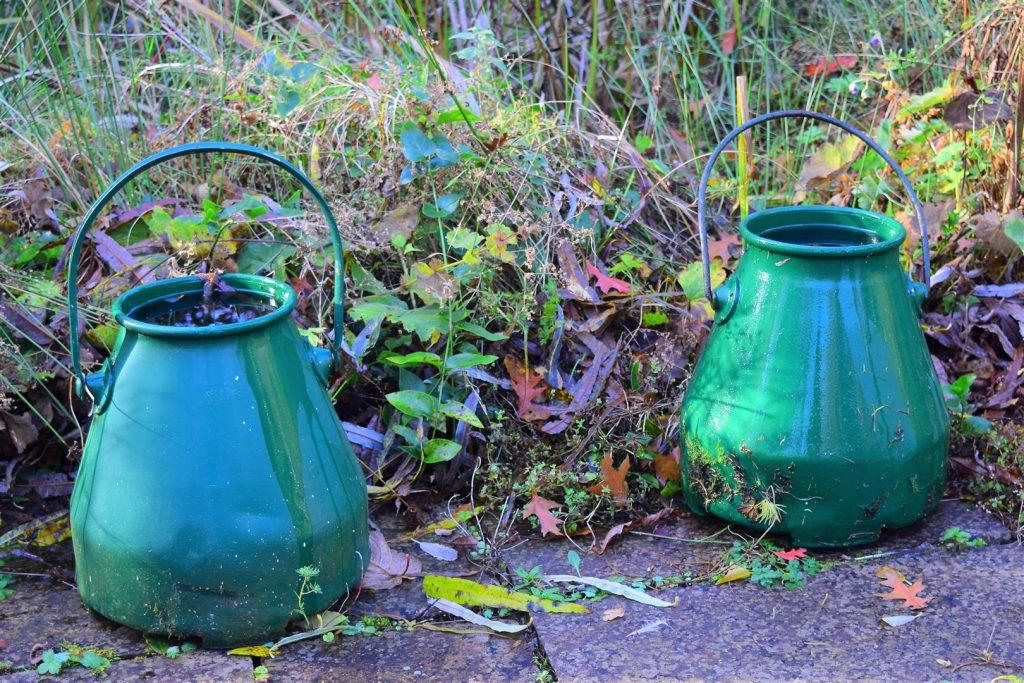
A lot of garden visitors from farming backgrounds have recognised the buckets from their own experiences at milking on the family farm and they date from the 1930’s and were used by the farmer’s wives to carry milk in to the kitchen for their own use .
Mimi , our cat, likes them too !
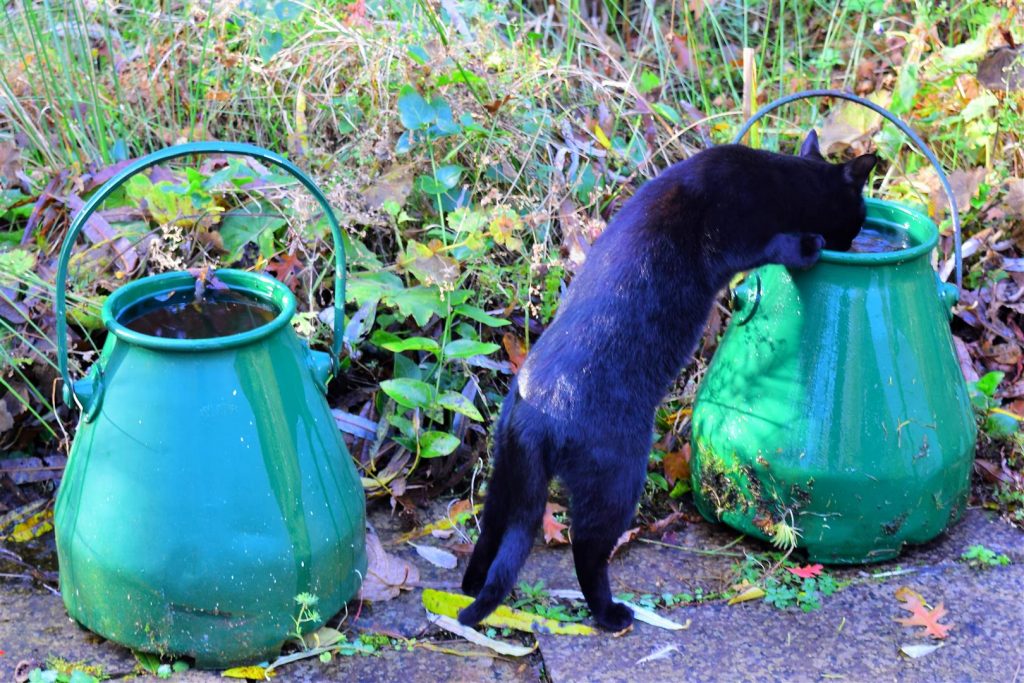
This guy is not a feature of the garden but he does come under the term ” unusual ” and when I walked out the back door in July 2008 there he was about a metre away staring at me … quite a shock and we watched each other for a few minutes with me not knowing he might attack and eventually I held out my hand and he came over and held up his neck to be scratched ! I kept him for a few days as he was obviously a house hold pet that had been dumped in the lane outside . He was a gentle old guy but I couldn’t keep him as goats will eat literally everything in a garden but my neighbours got him a home in a field with horses where I would see him every now and again , very happy as apparently horses and goats get on really well .
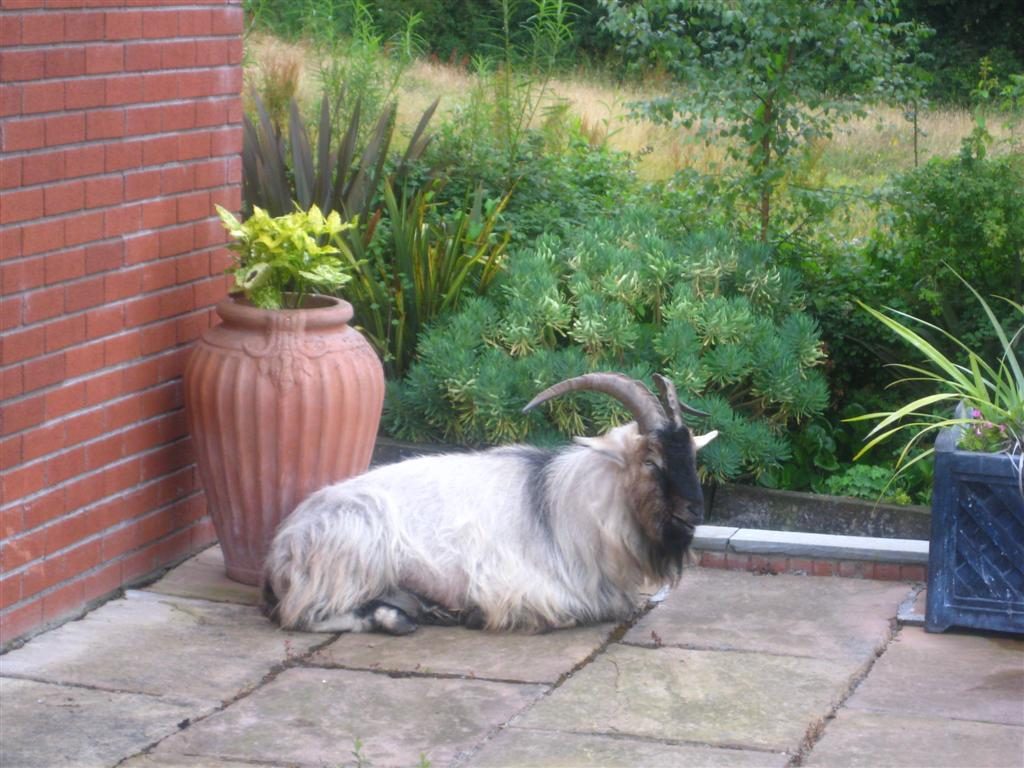
Does a rock installation count as an unusual piece for the garden ? I believe it does as an installation is different than just a rockery and I took great care in designing the space and each rock was selected and positioned individually in October 2020 … sourced from our neighbour , Pat ‘s land on the hill side about a half mile from our house .
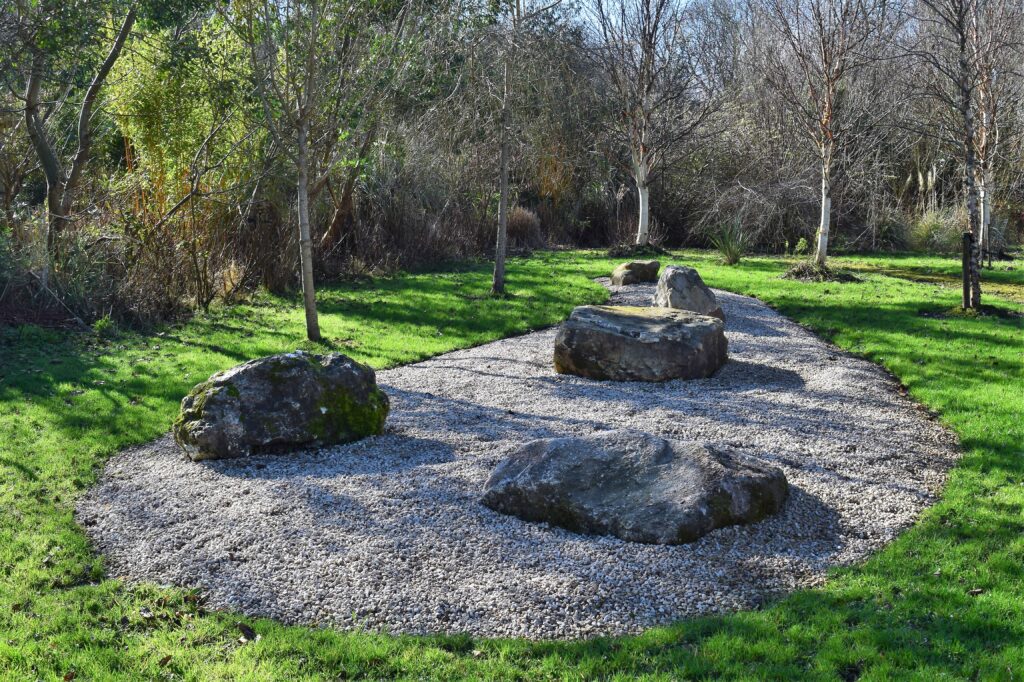
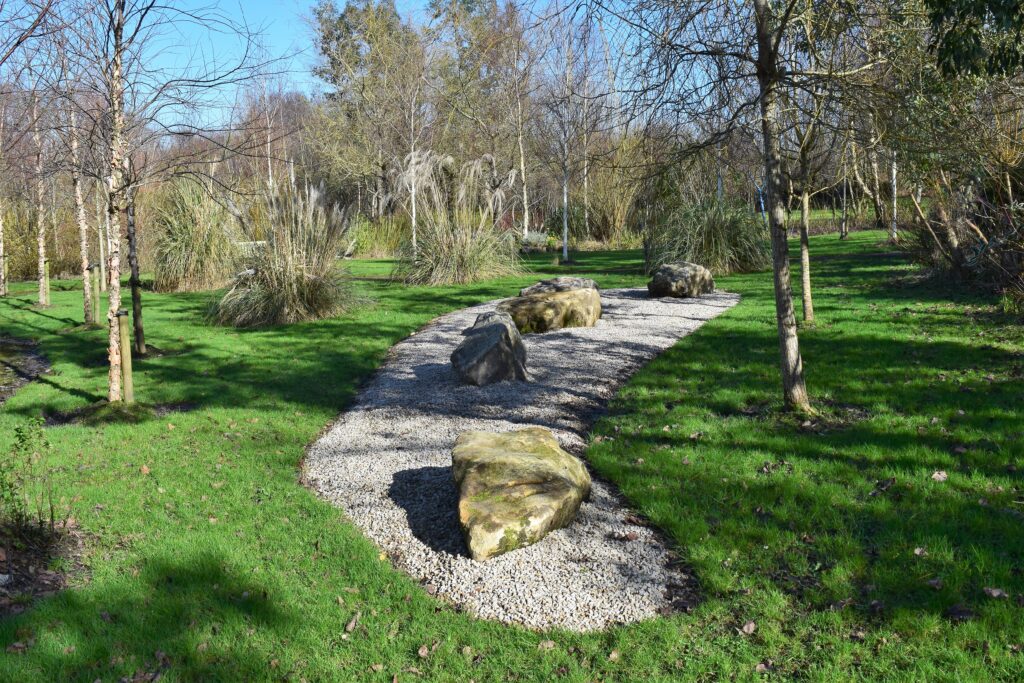
in early January 2022 I came across this japanese style stone lantern in Clonmel Garden Centre , not all shiny and new but nicely weathered and it fitted in perfectly at the corner of the new pond .
